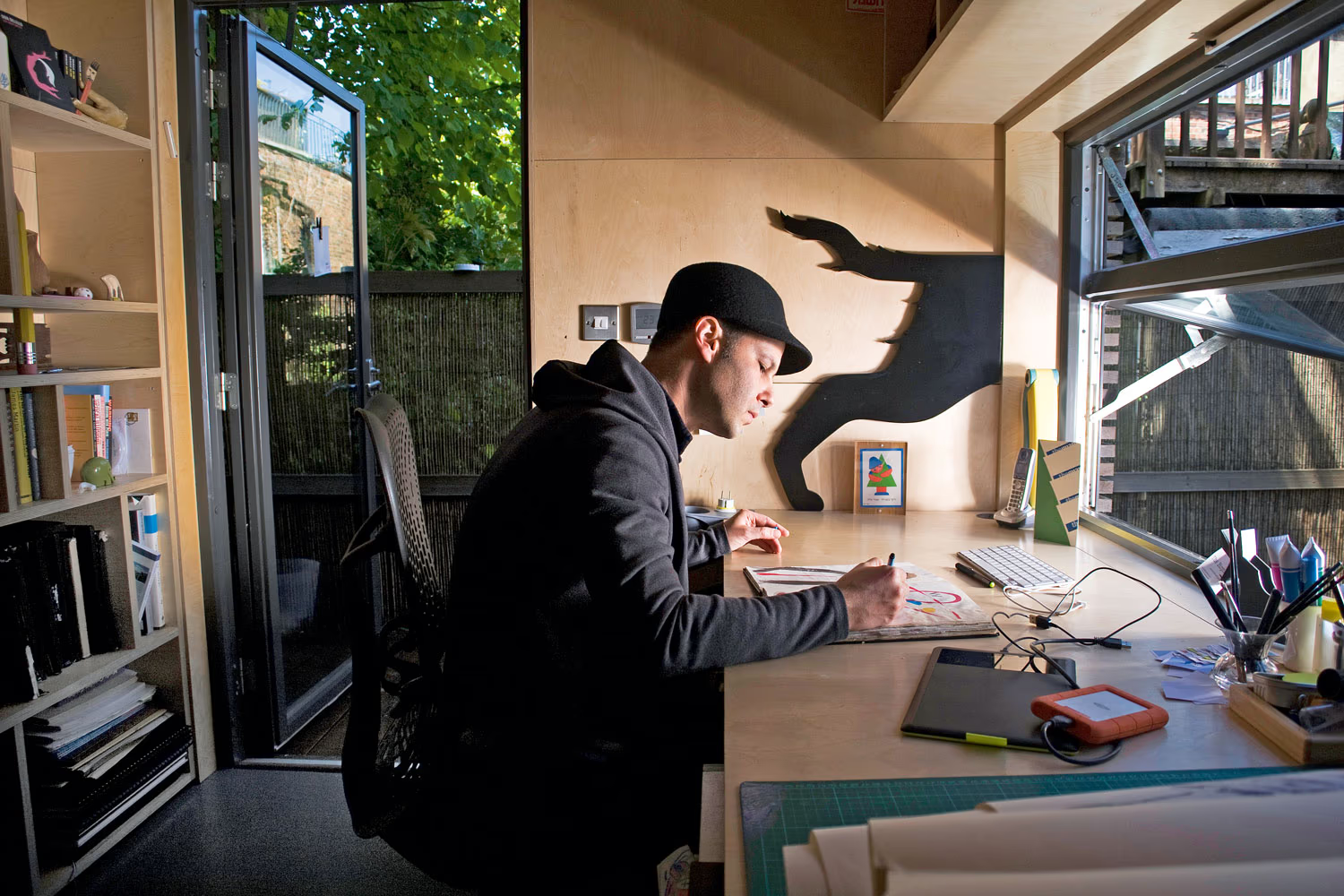Noma Bar’s uniqueness lies in his ability to create poignant and emotionally charged illustrations that spark discussion and reflection among viewers. He uses simple shapes, vibrant colors, and powerful symbols to express ideas about war, violence, social inequality, environmental issues, and medicine...
Next year, Noma’s career will mark its 20th anniversary. Throughout these years, the artist has shown admirable persistence in refining his method, never attempting to escape the images that emerge almost uncontrollably in his mind.
I thought for a long time about what my first question should be. The variety of your works and projects is impressive, and I want to ask about everything at once. So, I couldn’t think of a better way to start our conversation than by asking about your typical day. How does it begin, and what fills it?
I usually get up at 7 a.m., make breakfast for my daughters, and send them off to school. I live near Highgate Wood—a beautiful spot in North London that not many people know about—so sometimes I take a short walk there in the morning. After that, I grab a sketchbook, a pen, coffee, and head back to the woods, but this time for work. I start brainstorming, sketching, and spend most of the day there. In this place, I can completely lose myself and come up with new ideas.
Around 4 p.m., I arrive at the studio and transfer my sketches to the computer to send them to the client. This can be one brief or ten. I work on several projects simultaneously, and each of them has its own space in my mind. Whether I’m working in the woods, at the studio, on my way home, or even at night, they are constantly in my thoughts. So my day can end at 2 or 3 a.m.
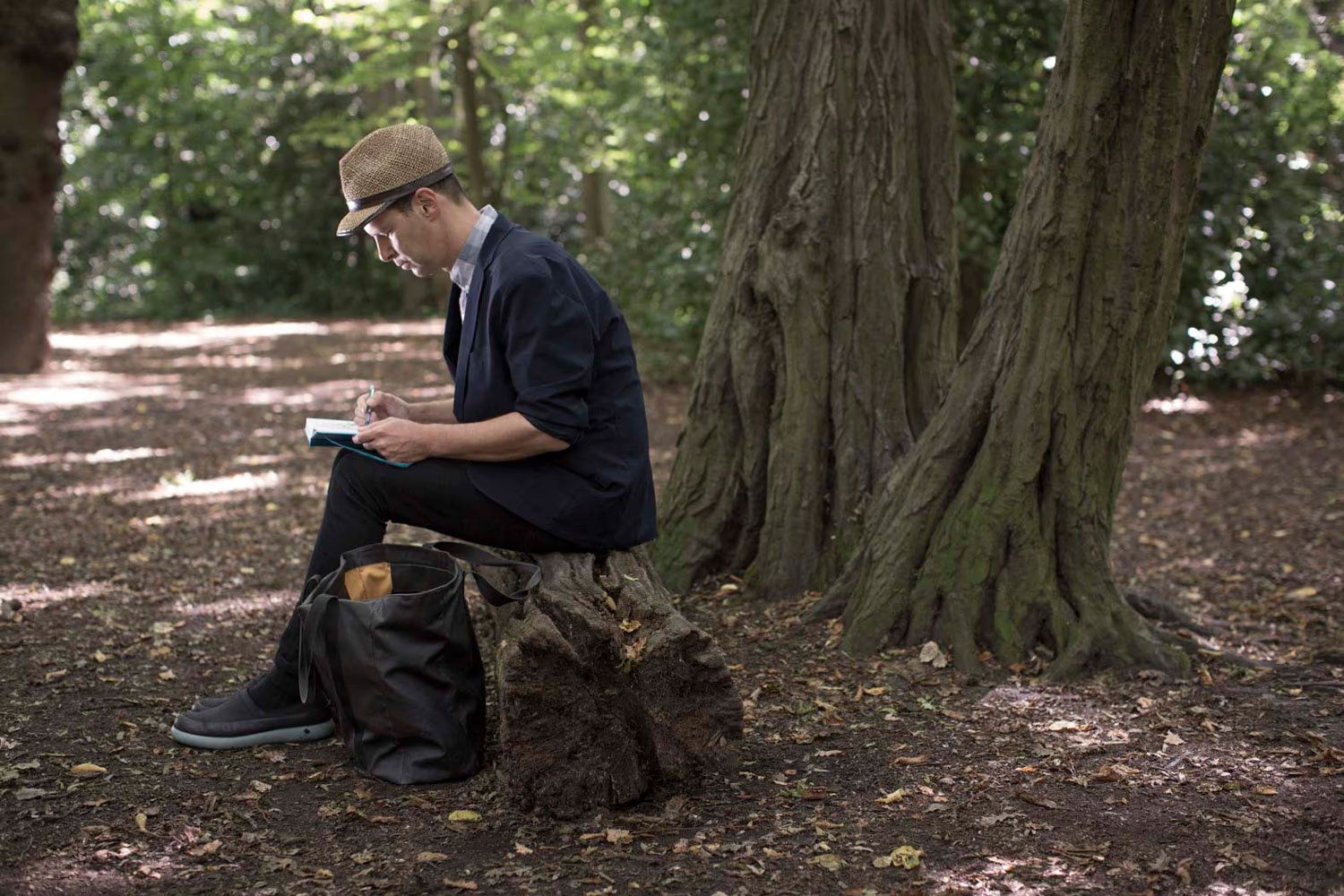
Noma Bar in Highgate Wood while working.
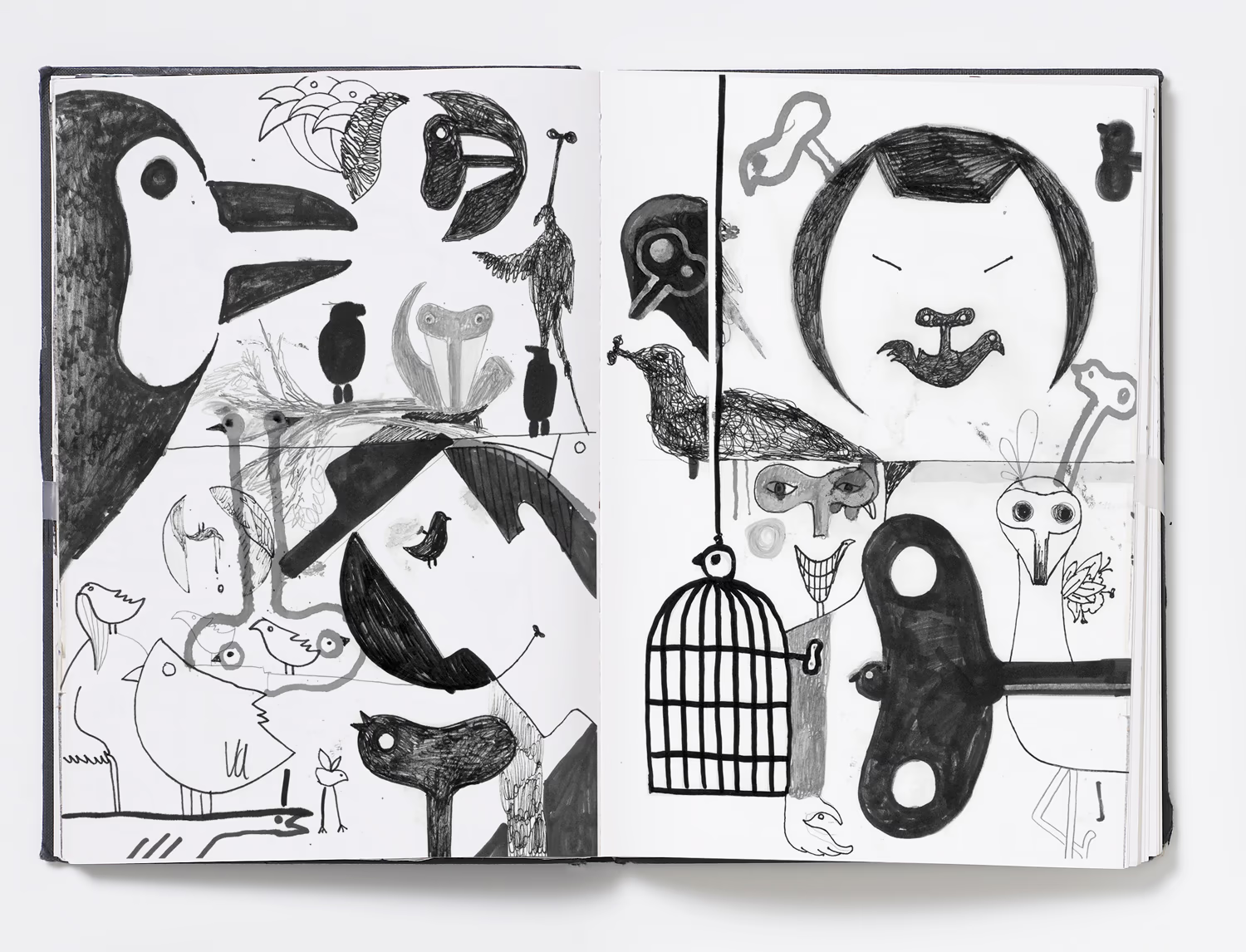
Noma Bar’s sketchbook.
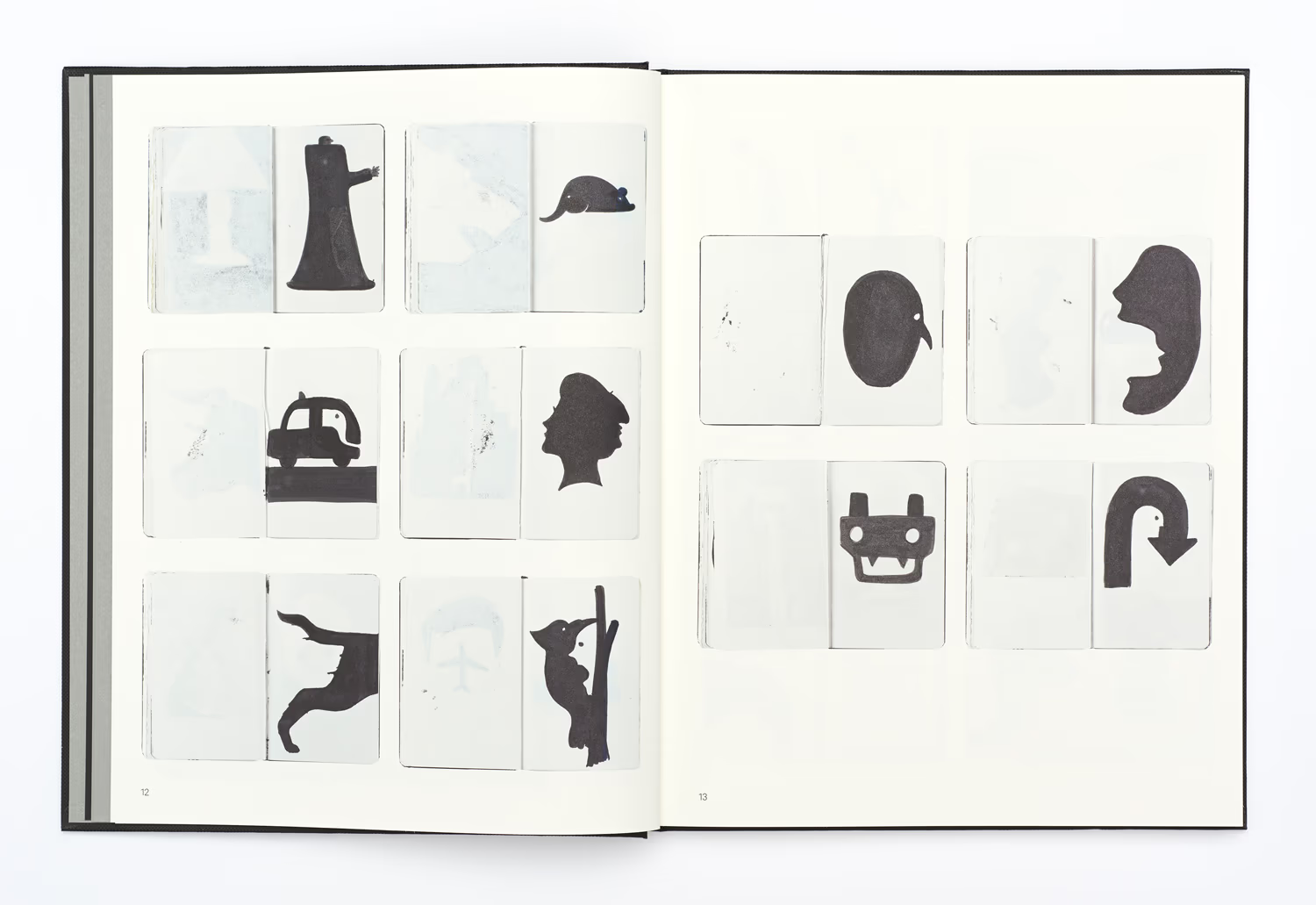
The spread of the book Rough Smooth.
What does your studio look like? What is the atmosphere like there?
For the past 16 years, my studio has been a 6-square-meter space with a view of the garden. It’s located in my home. At first, it was an apartment, but when we purchased the second floor above it, I immediately turned it into a studio.
Sometimes I take my laptop and work in a café. I can work on a train or a plane as well. But for reflection and brainstorming, there’s no better place than the woods.
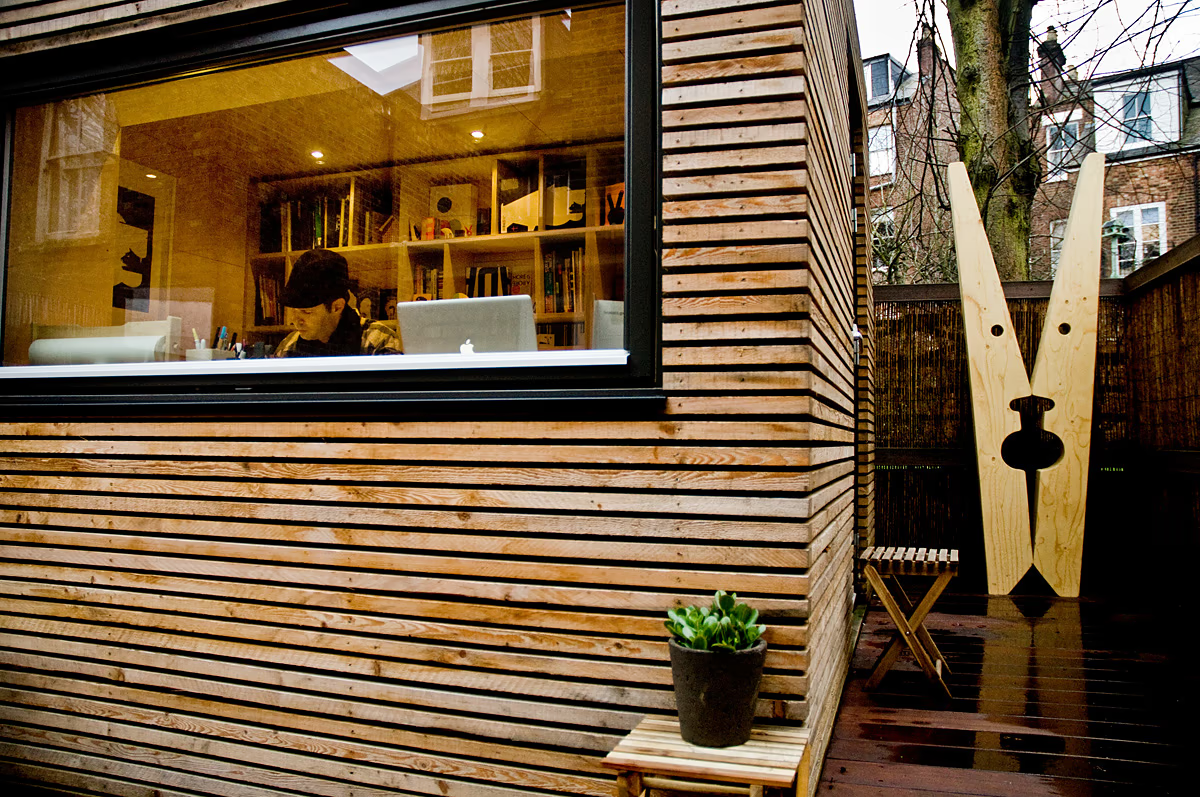
Noma Bar’s working studio.
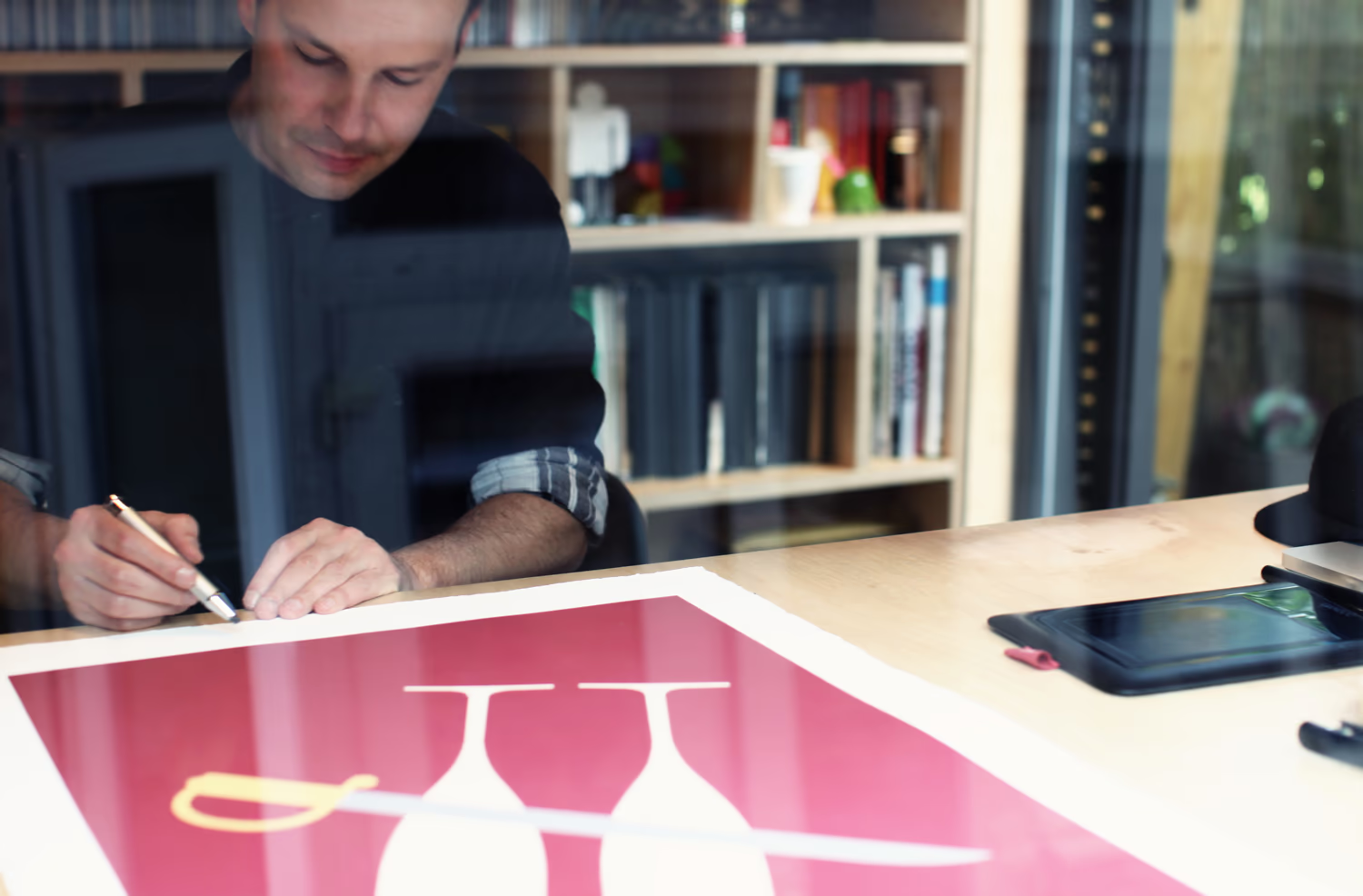
Noma Bar in his studio.
What are you working on right now?
Many projects. For Apple, Pfizer, Los Angeles Magazine, Los Angeles Times...
When I was searching for information about you online, every website showed new works of yours that I was unfamiliar with. I would see several illustrations on one site and think, 'Wow, this is great!' Then I’d go to another site and see even more illustrations. And so on—third, fourth websites. Different projects and illustrations on various themes or events—there are too many to count. So I asked myself: 'Where can I see all of Noma Bar’s illustrations in one place?' I couldn’t find such a source. Therefore, I want to ask you: where can I see absolutely all your works?
There is a collection called Bittersweet, which includes five books. Each of them is dedicated to different themes: one about war and politics, another about sex, a third devoted to portraits, and so on. The books categorize my works by themes and sections.
Bittersweet: Noma Bar. Trailer
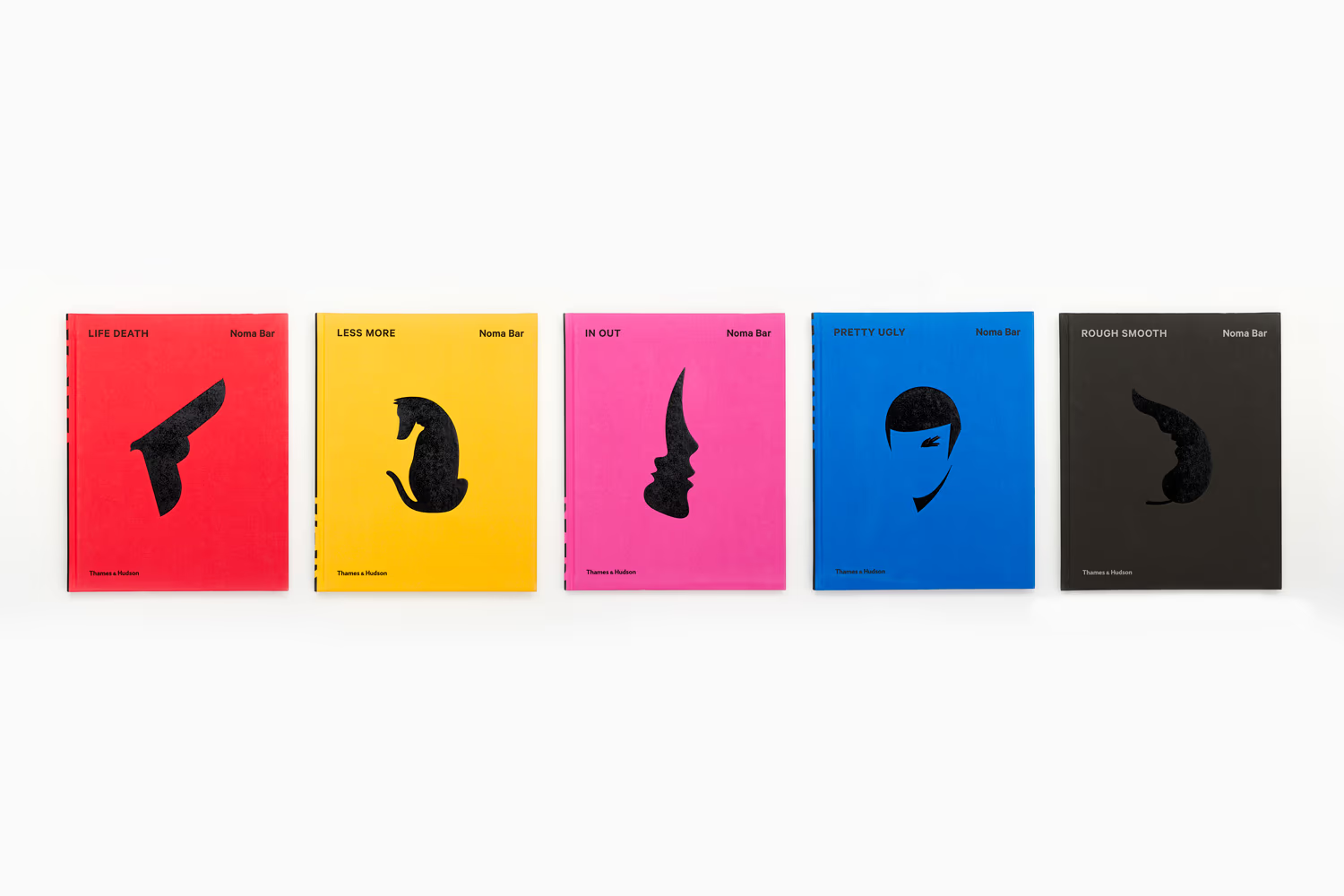
Books included in the collection Bittersweet
Sometimes I create a work now, but the client publishes it six months later. It’s difficult to keep track of that. Next year will mark 20 years since my first illustration was published. There are about 5,000 works on my agency’s website, as well as on Instagram and Facebook.
In social media, I don’t post complex works because understanding them requires context about the story or event. I choose what can be quickly and accurately understood. For example, right now I’m creating illustrations for a project about bladder cancer—it’s a complex story. Or an illustration about the Hollywood writers’ strike—understanding it requires knowledge of local details.
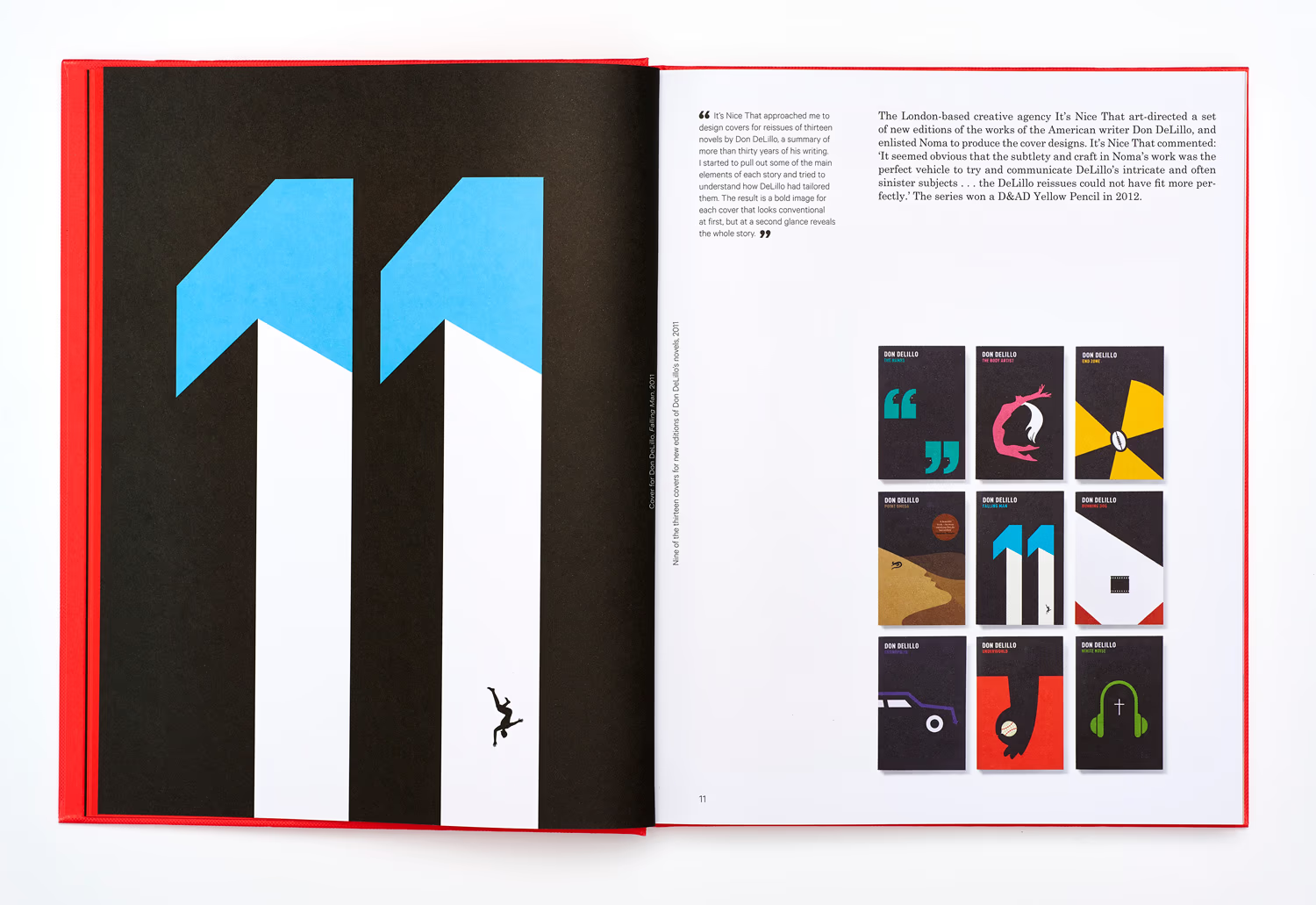
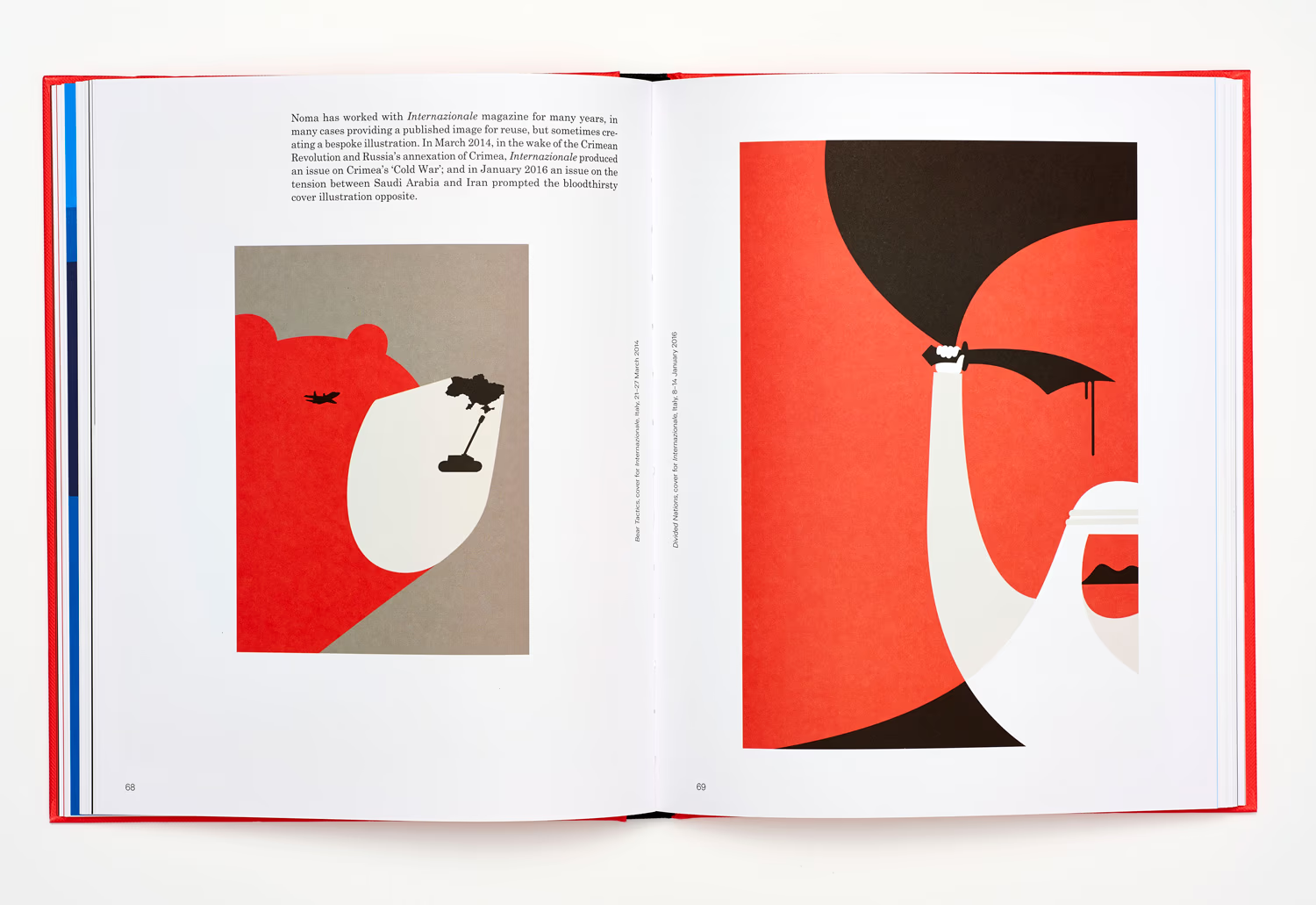
Spreads from the book Life Death.
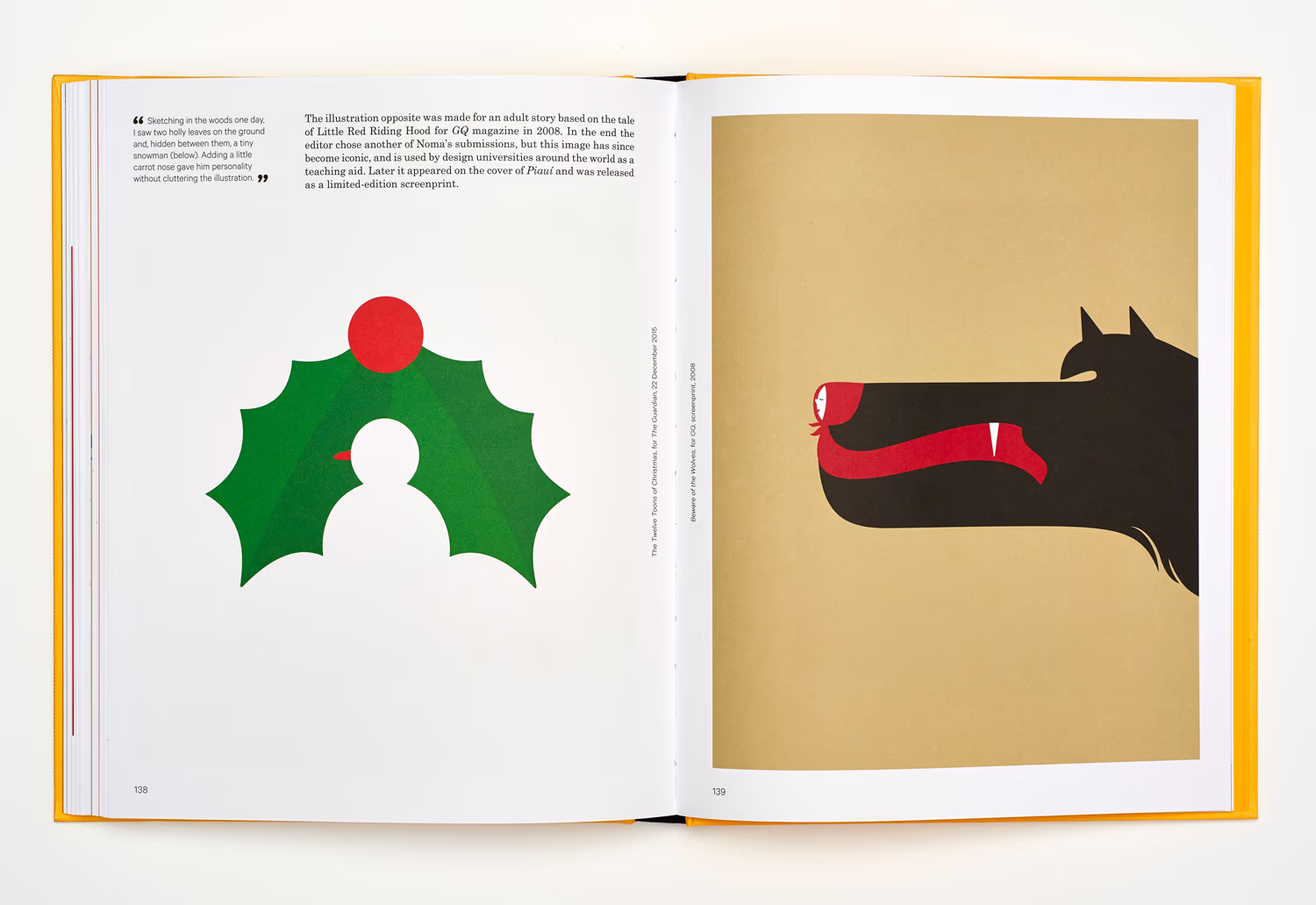
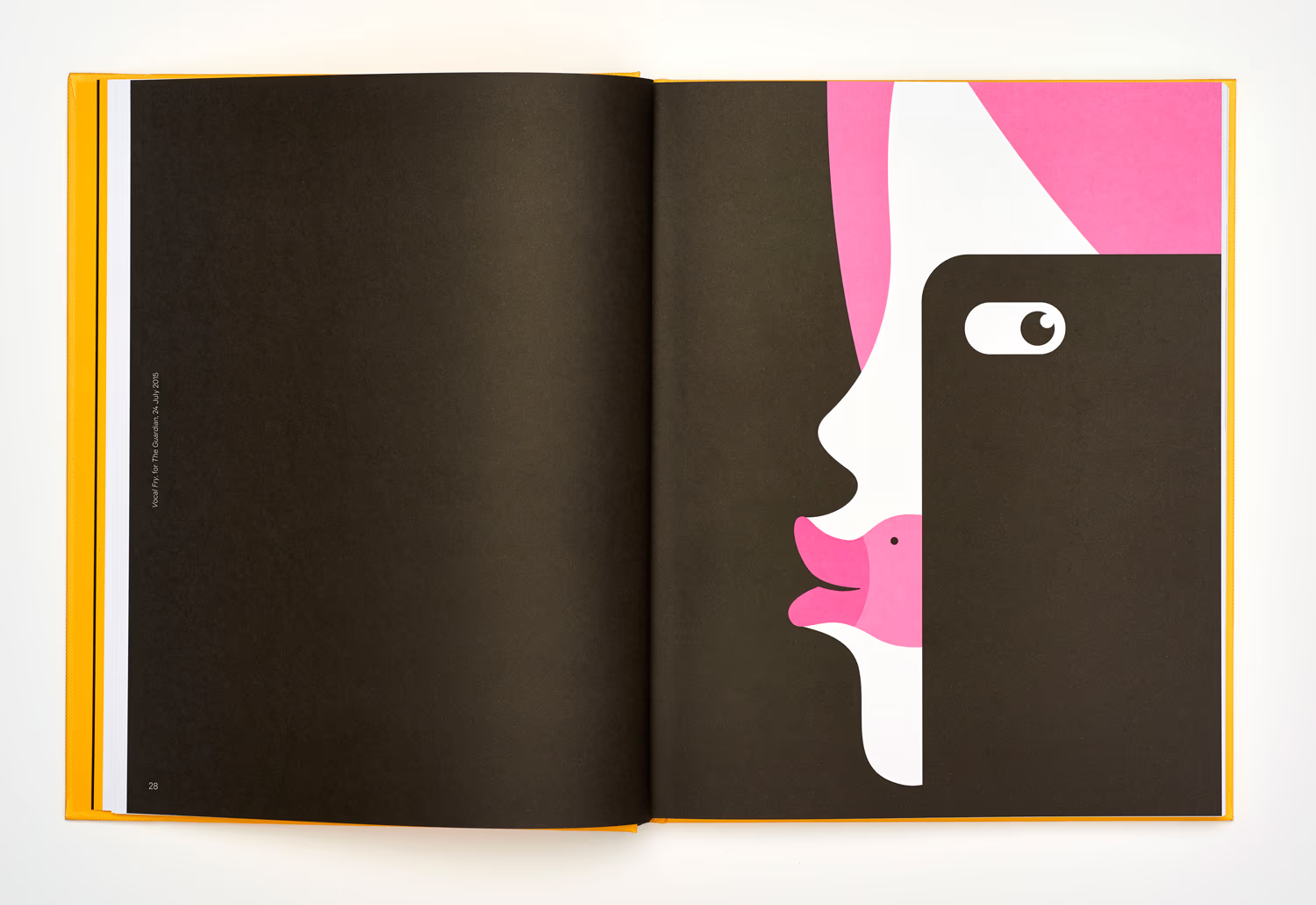
Spreads from the book Less More.
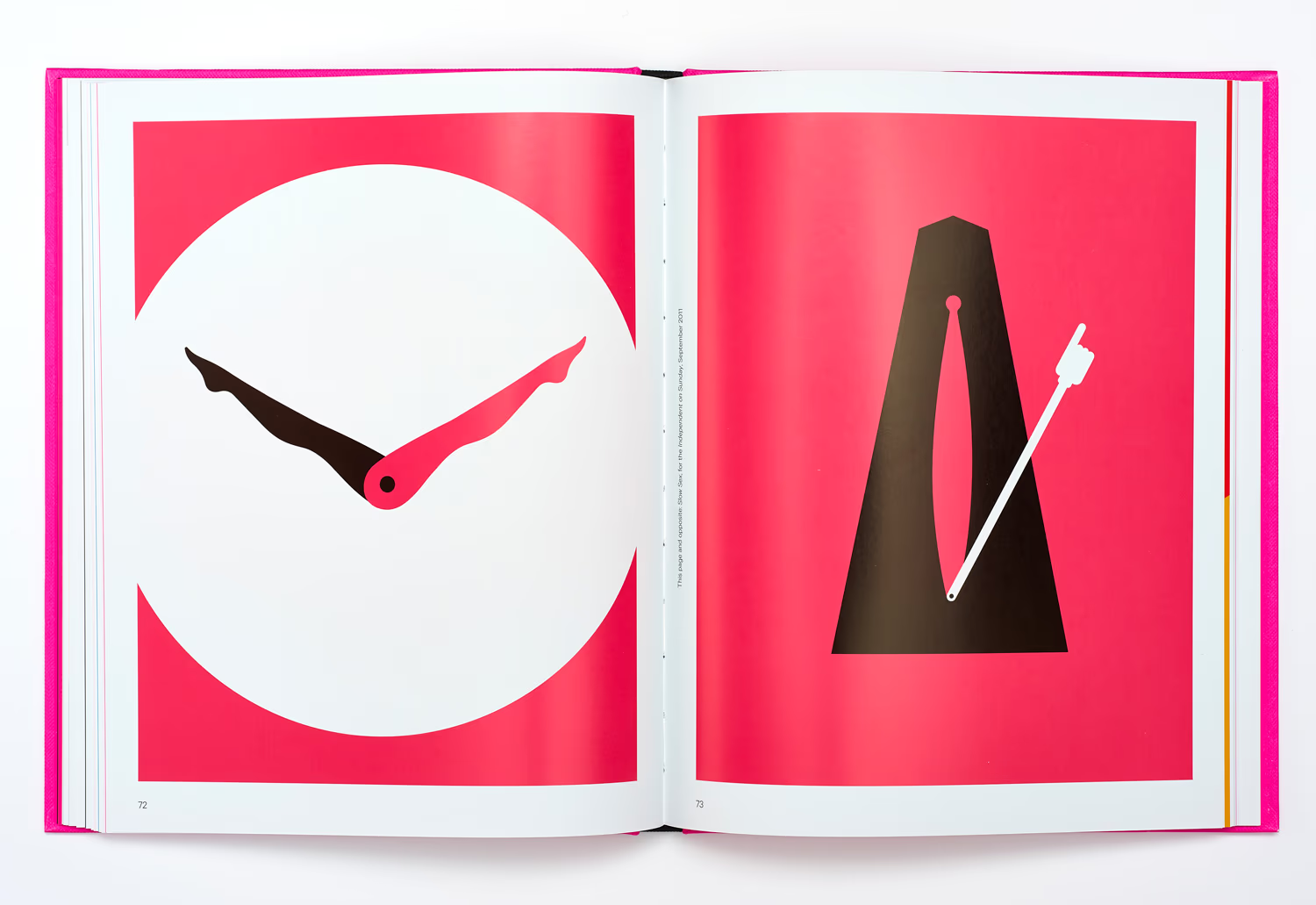
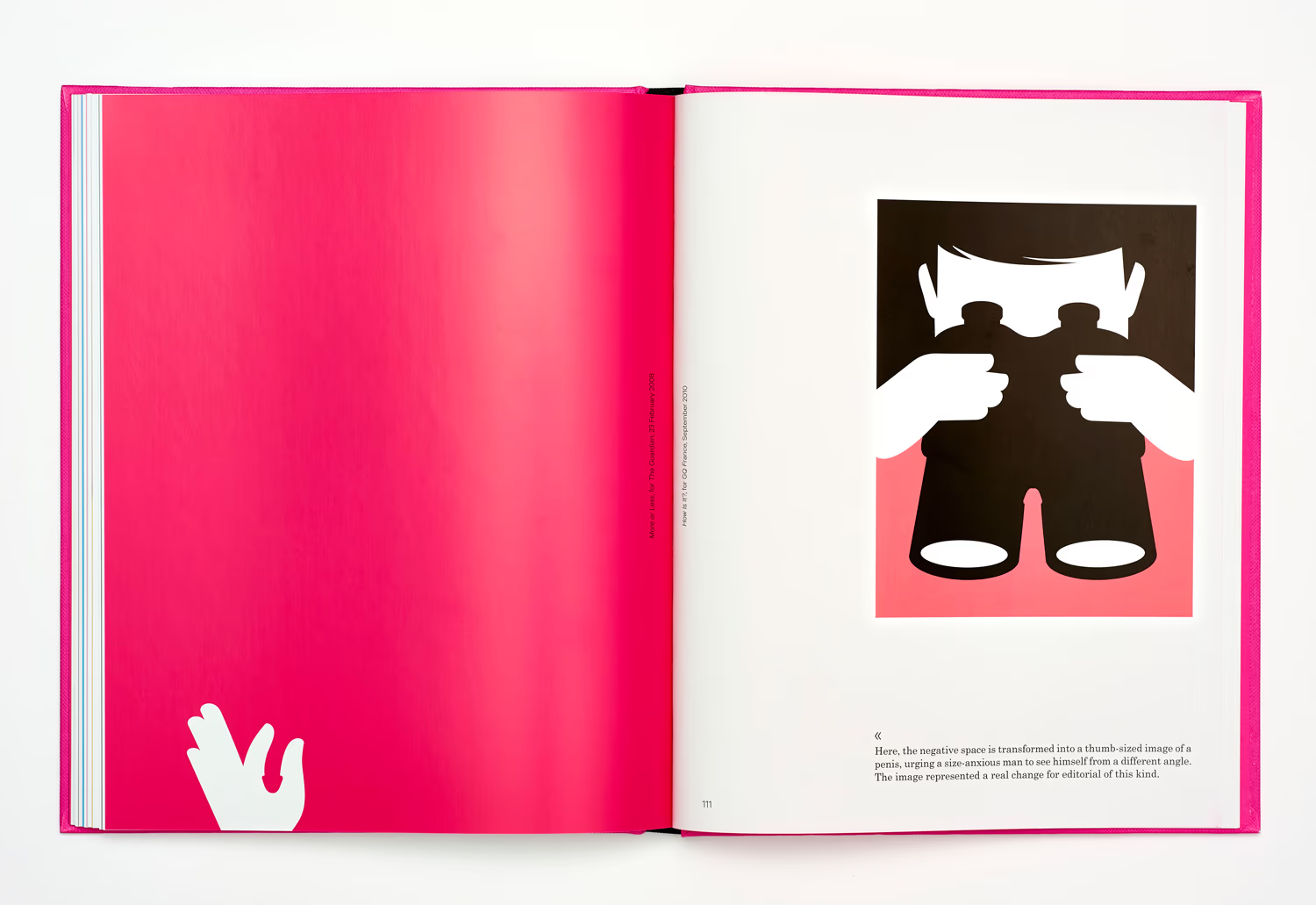
Spreads from the book In Out.
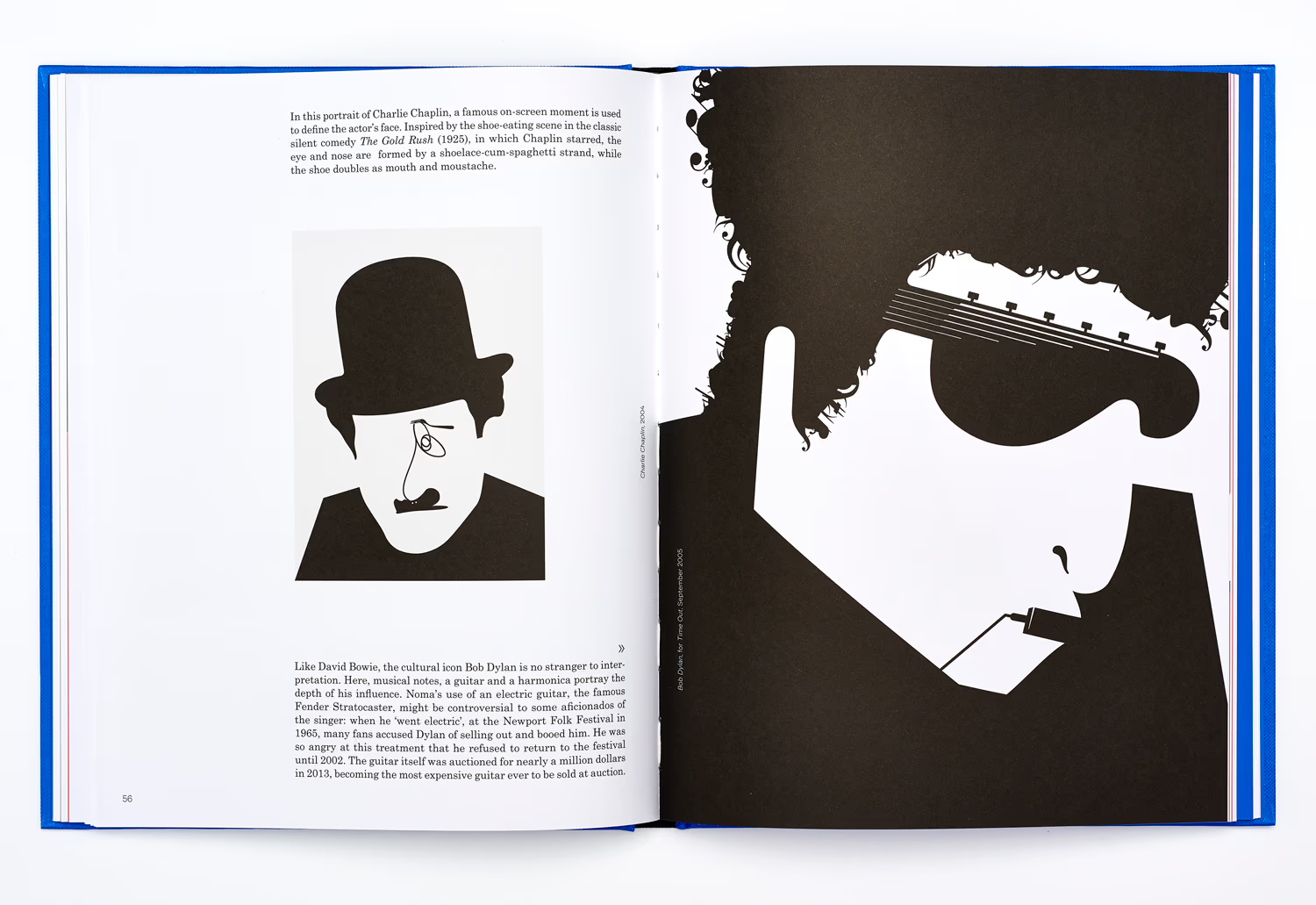

Spread from the book Pretty Ugly.
One of the latest works you showcased on your Instagram is an illustration for Margaret Atwood’s books. In Ukraine, Margaret is known as the author of the novel The Handmaid’s Tale. Could you tell us how the collaboration with her came about?
We collaborate with Margaret through agents; I don’t work directly with her. But I know that she comments on some things herself. The result of this collaboration was two covers for her books: The Handmaid’s Tale and The Testaments.
It felt a bit like a military operation. Before starting the work, I was sent a summary of the book printed on paper. They didn’t want to send it via email to keep everything secret.
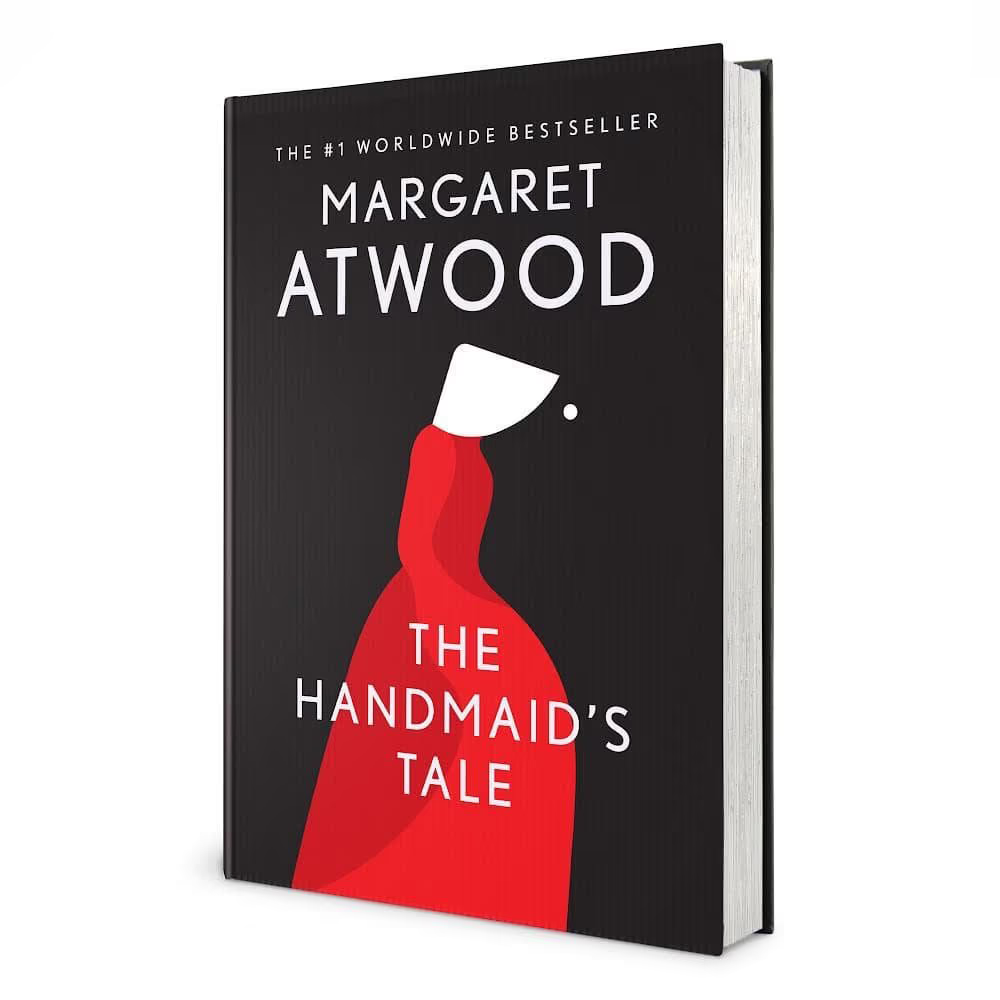
Cover of The Handmaid's Tale.
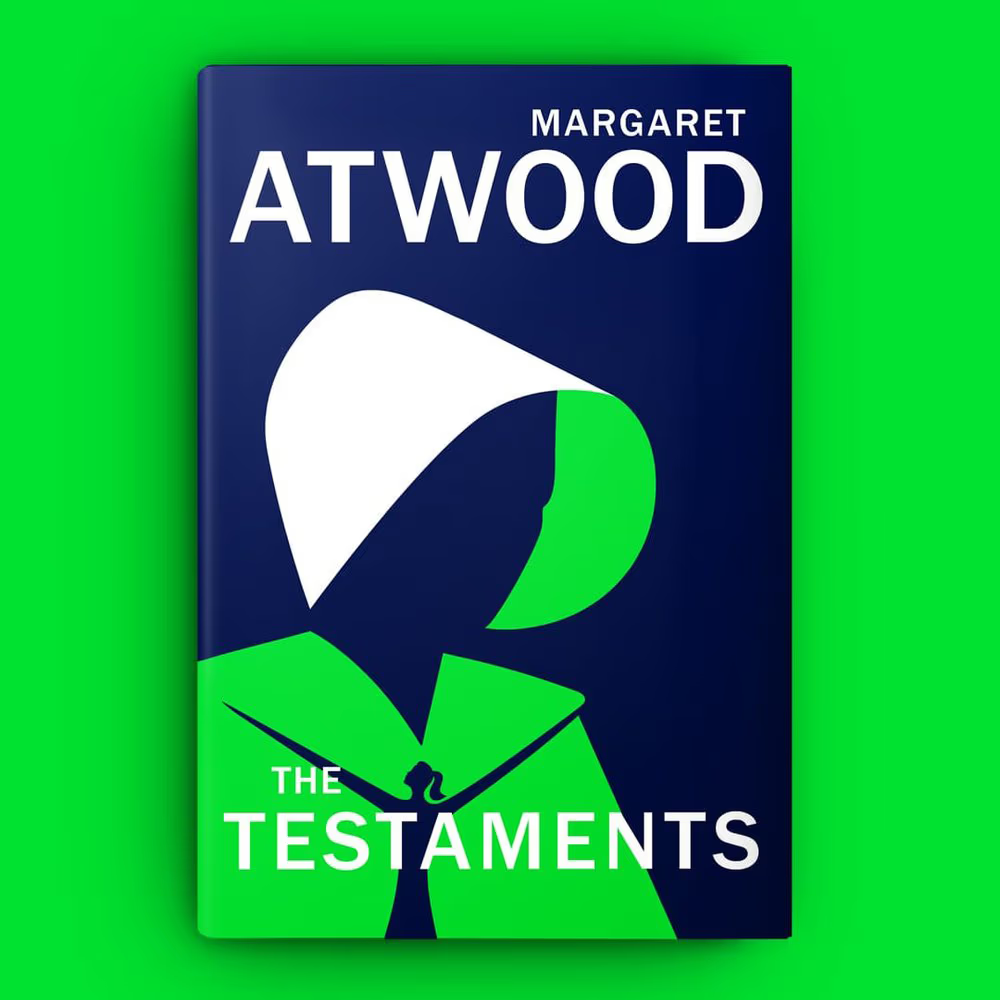
Cover of The Testament.
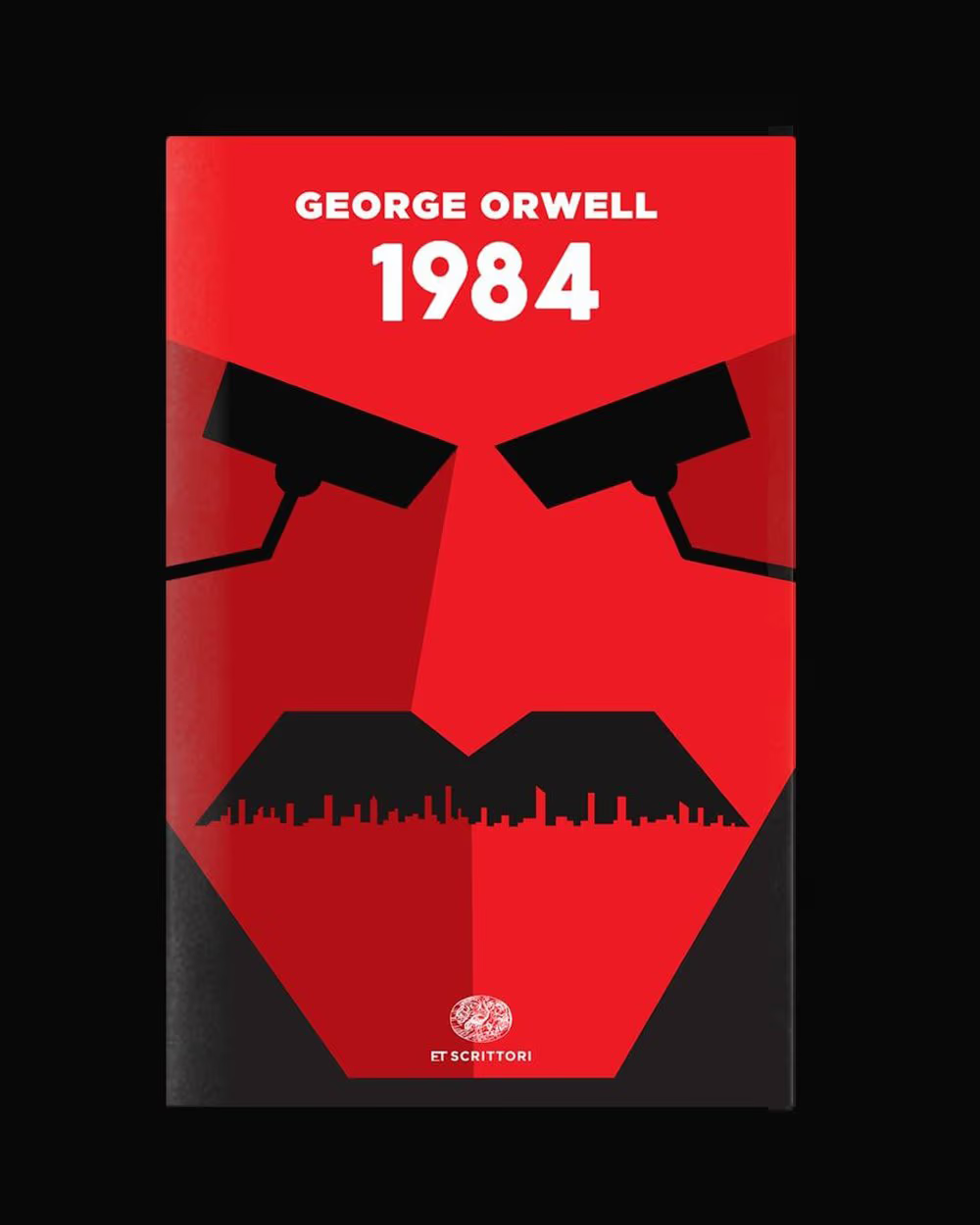
Cover of The 1984.
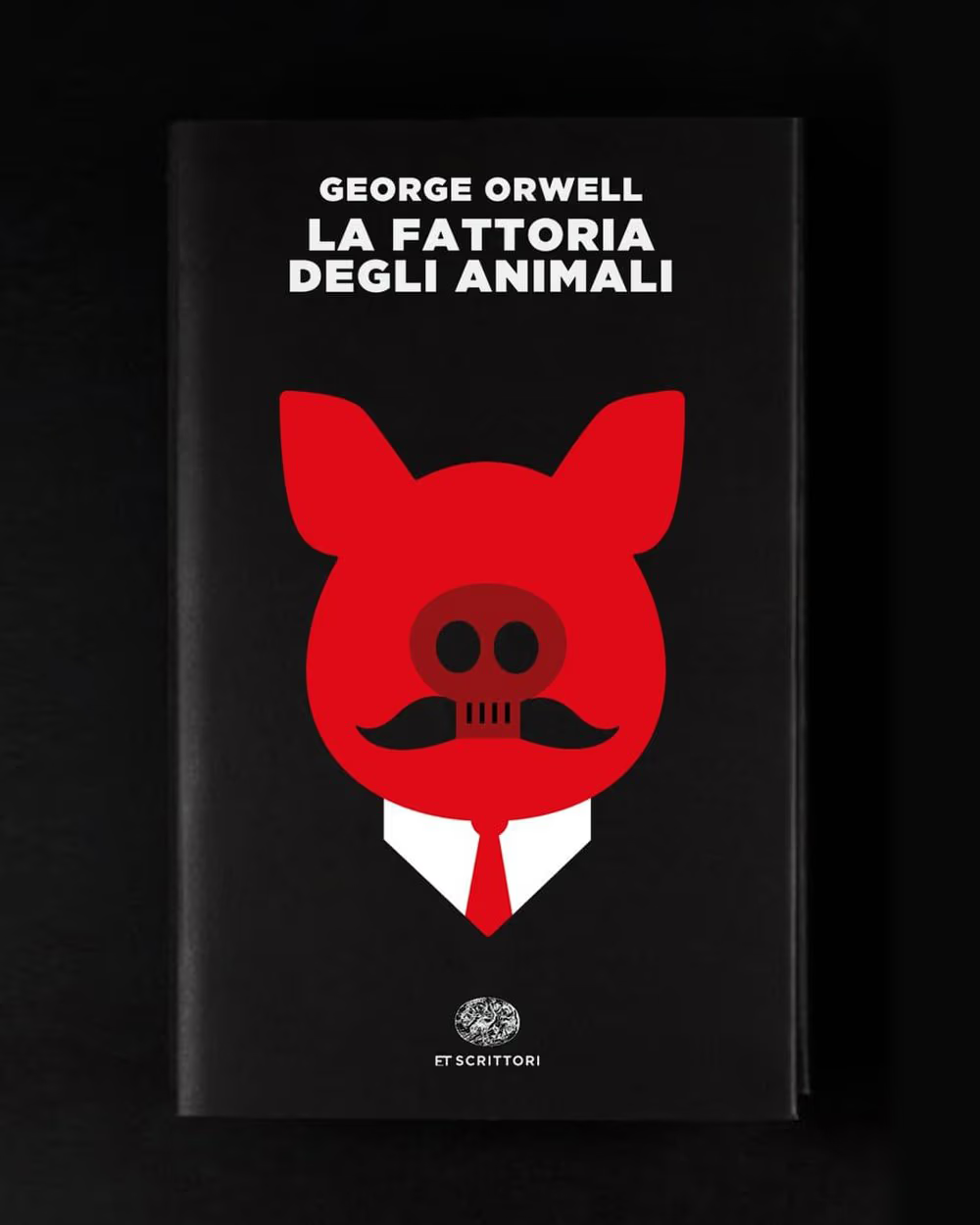
Cover of Animal Farm.
In your portfolio, there are works for well-known global brands and media. When I asked John Holcroft (an illustrator from the UK) about working with famous brands, he mentioned that it’s not always as great as it seems. This is because there are many people in corporations who make decisions and want to make changes to the illustration, which can detract from the illustrator’s original concept. What has been your experience working with well-known brands and media?
First of all, I don’t show works or sketches that I’m not satisfied with. Behind everything the client sees is an idea and thought. When clients come to me, they already know my work, my approach, and what they want. Therefore, in my case, 99.9% of collaborations are successful. For example, when I worked with the Victoria and Albert Museum, which has about 20 people on its board, I waited a long time for feedback because the work went through many stages. That’s not always the case. While collaborating with Apple, our director worked directly with Steve Jobs or someone from the top executives. So overall, I have a good experience in collaborations.
There is no difference in creating something for big or small brands; I always put energy and all my experience into the project.
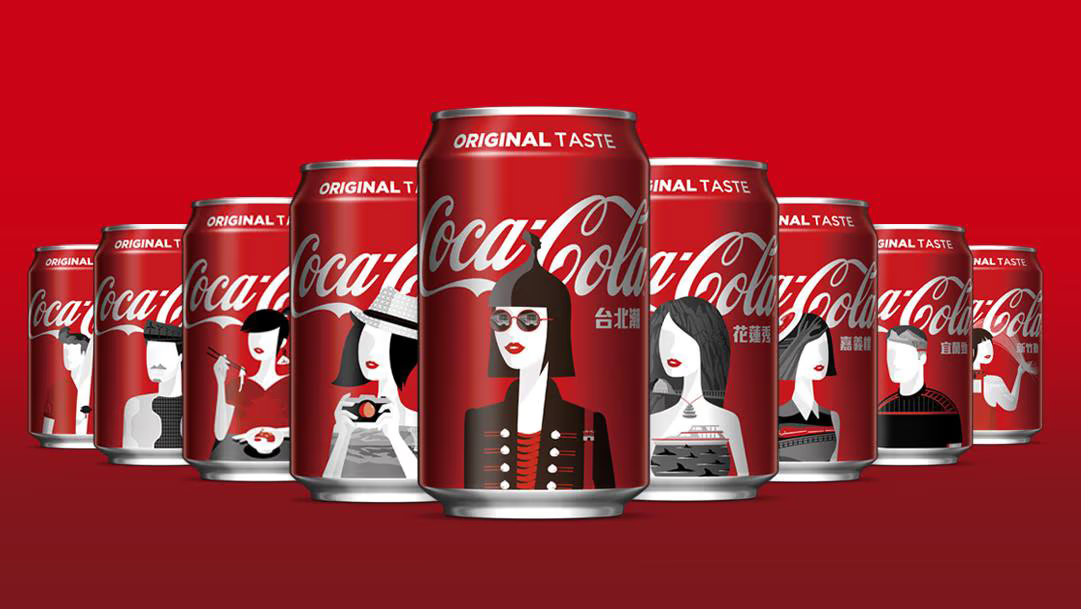
Illustrations for Coca-Cola.
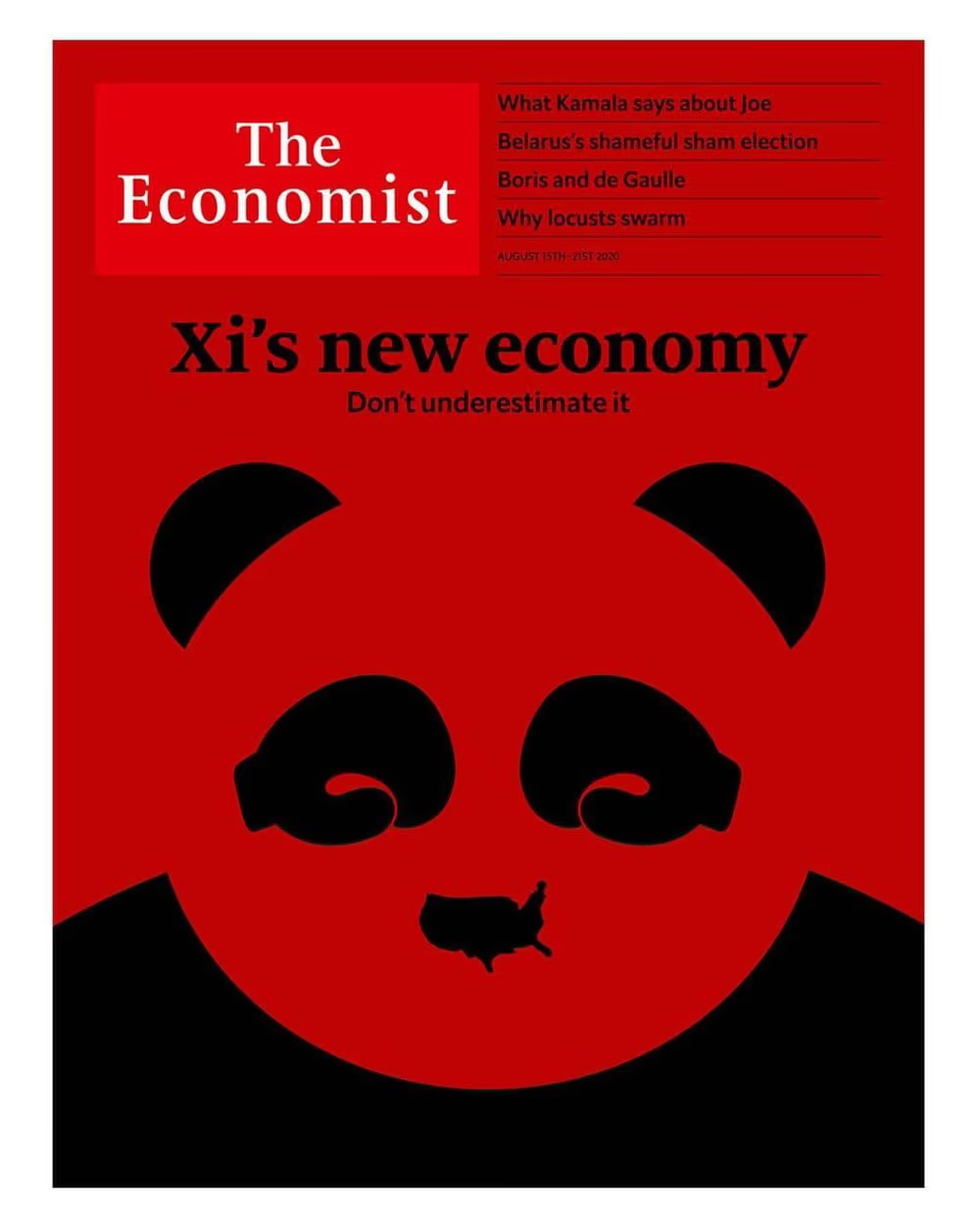
Cover illustration for The Economist.

Illustration for article Time.
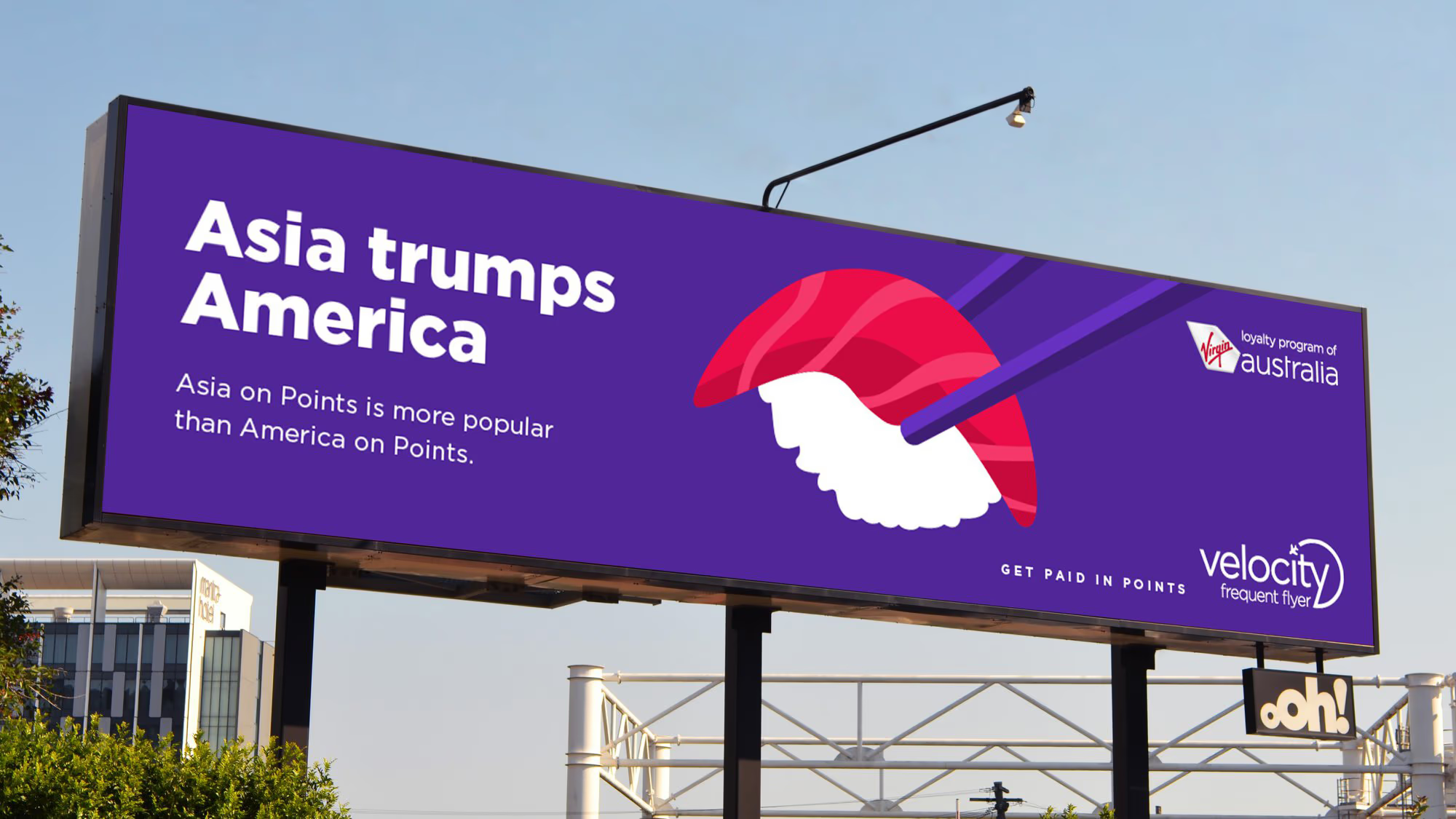
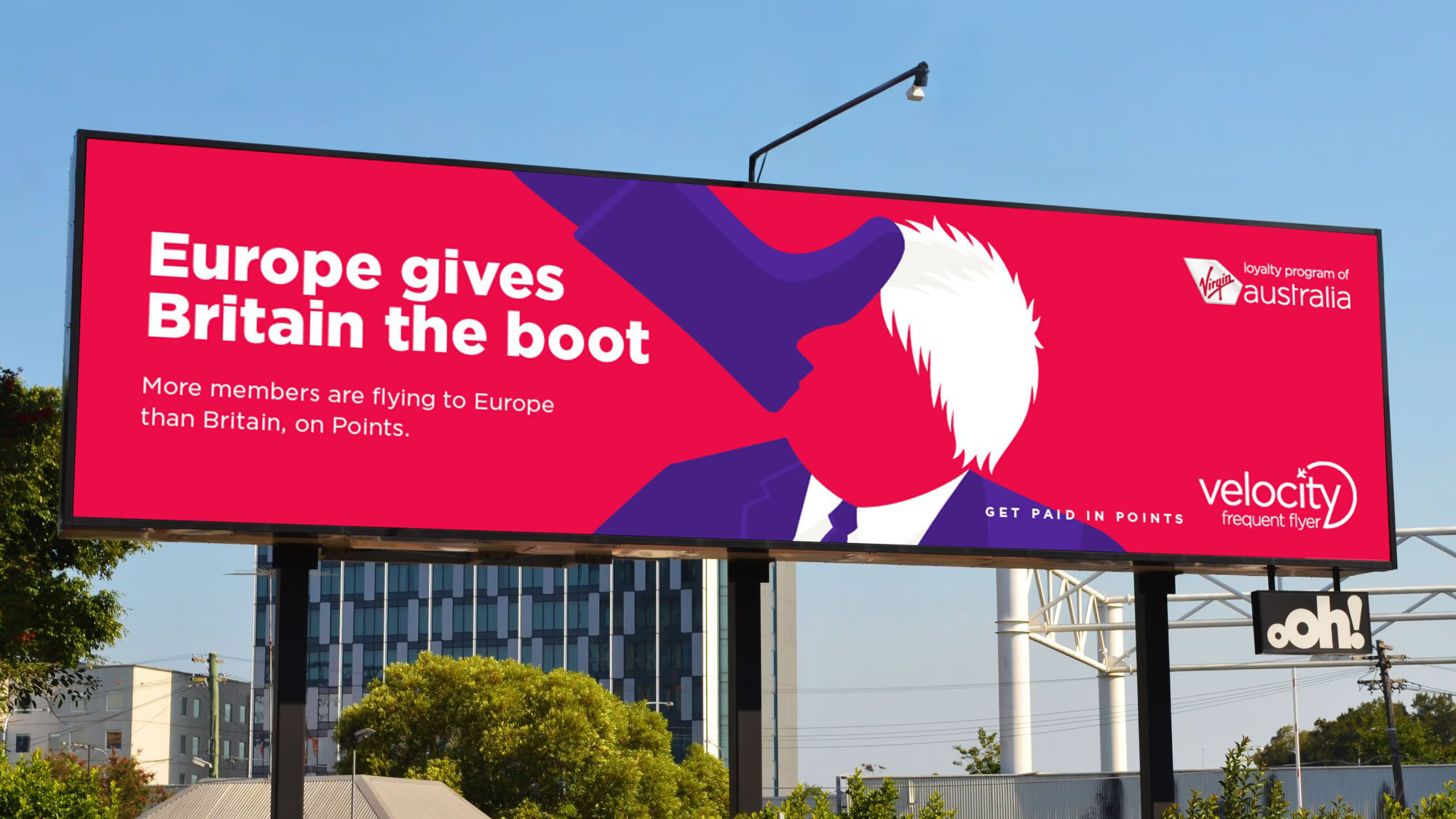
How many requests for illustration work do you receive in a month?
I don’t know the exact number; it varies. Sometimes I receive three proposals in a day, and other times just two in a week.
What does it take for you to agree to participate in a project?
Story. When I read the summary of a potential project, I determine if there’s something I can illustrate or highlight. In the past, I was offered to create something, for example, for e-cigarettes or similar products, but I declined because I focus more on important stories.
Almost every interview asks you about your method or approach, particularly how you manage to create very minimalist yet simultaneously expressive illustrations. I want to ask about this as well, but my question is: how does your method or approach change or evolve over the years? Perhaps you have an example.
It constantly evolves. What hasn’t changed is that I look for stories that can be distilled into a single image. I strip away all layers to find and show only the main essence. So, I do the same things I did 20 years ago. When reading a brief, a few years ago, I would come up with two or three ideas for the client; today, I generate 20 to 30. I don’t know how this happened, but something changed in my mind, and I find more and more new ideas. Sometimes it’s hard for me to determine which ones are better, so I give them to the client to choose from.
Something has changed in terms of form; digital pens and computer mice have introduced their own changes. When I look at my early illustrations, like the one of Saddam Hussein, they seem much more hermetic compared to what I create today. There was a certain charm in that. However, I still use the same method and process that I’ve employed for many years. I believe in consistent hard work and honing my craft. It’s a daily practice. Every day you wake up and do almost the same thing, very slowly and carefully.
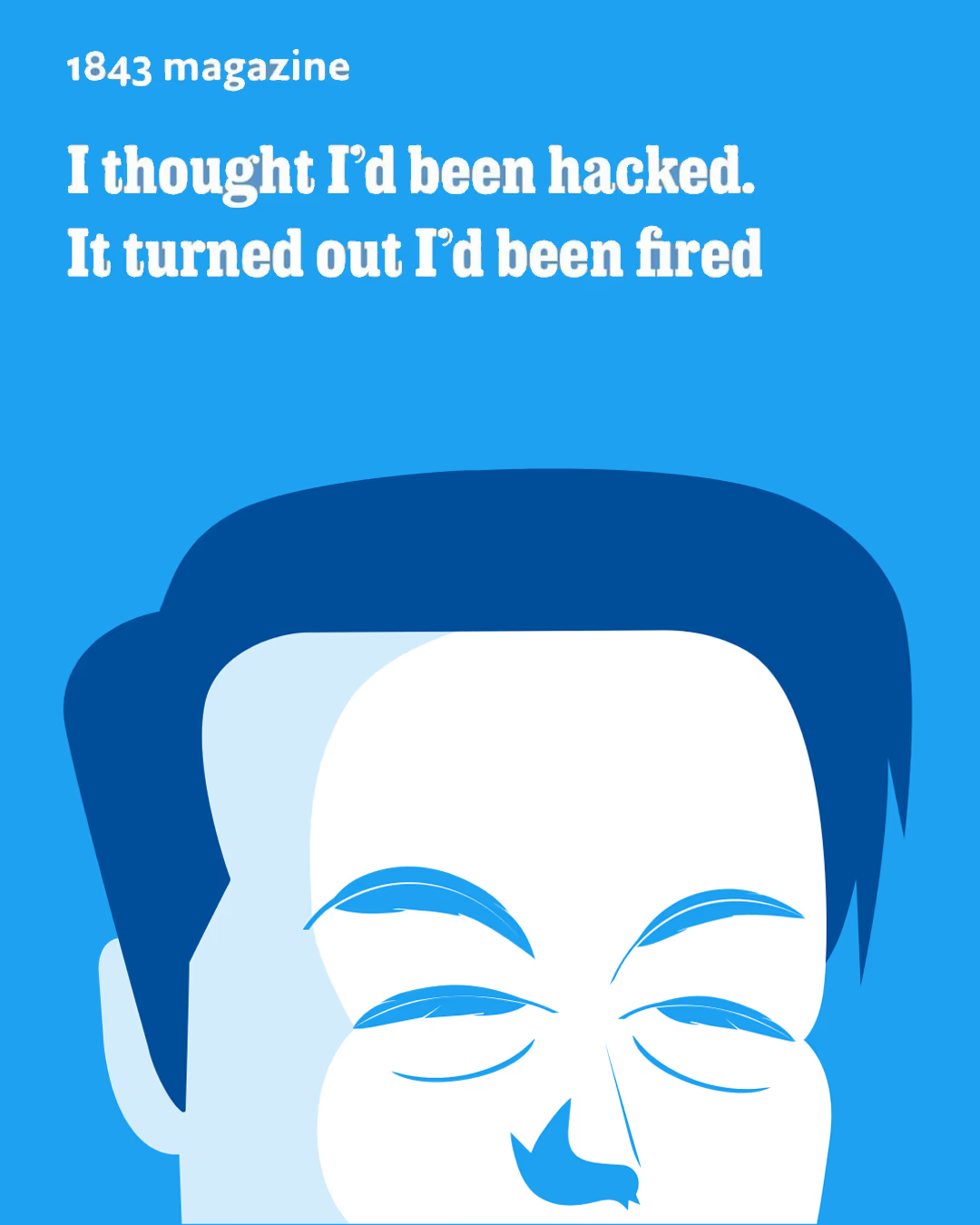
Elon Musk.
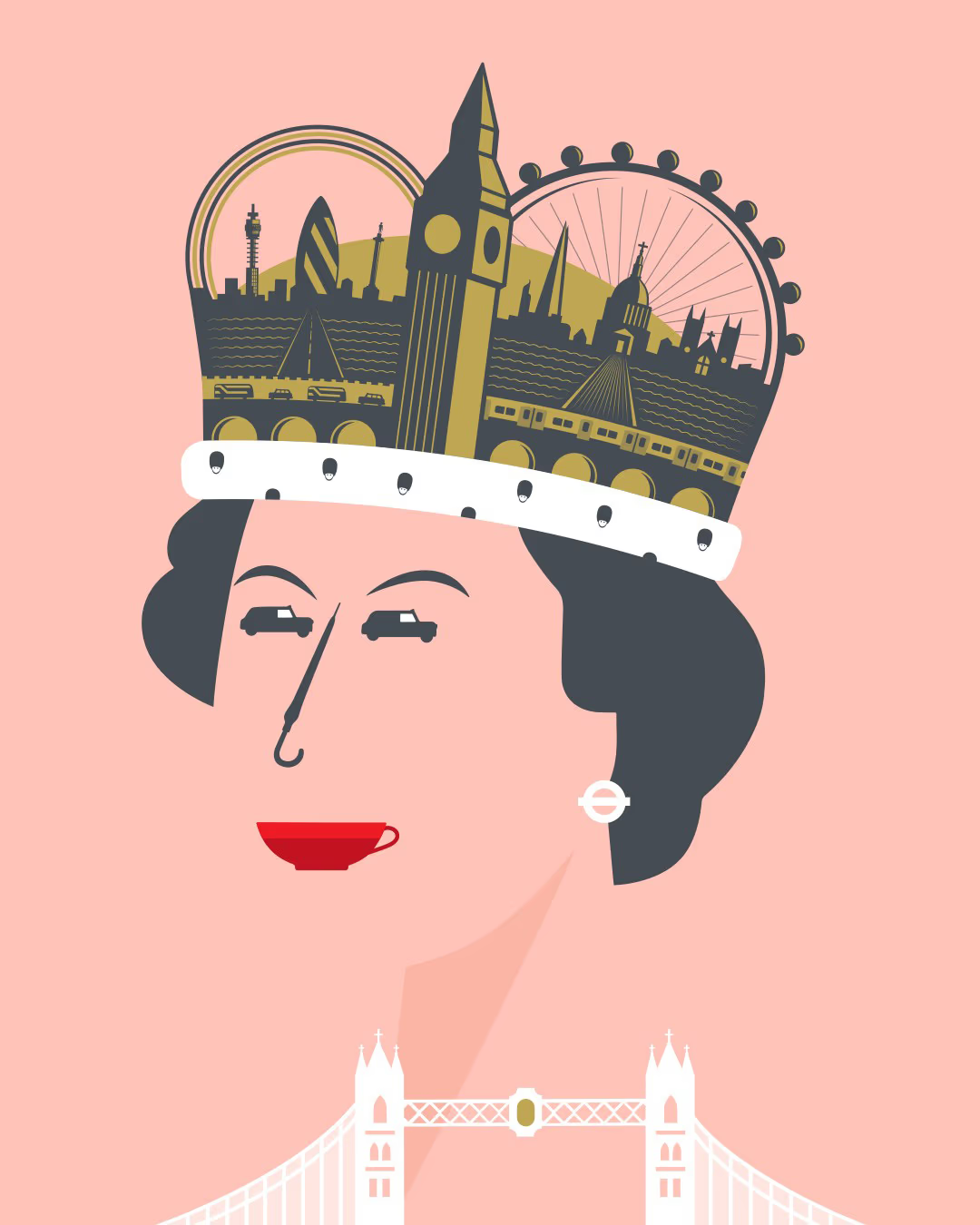
Elizabeth II.
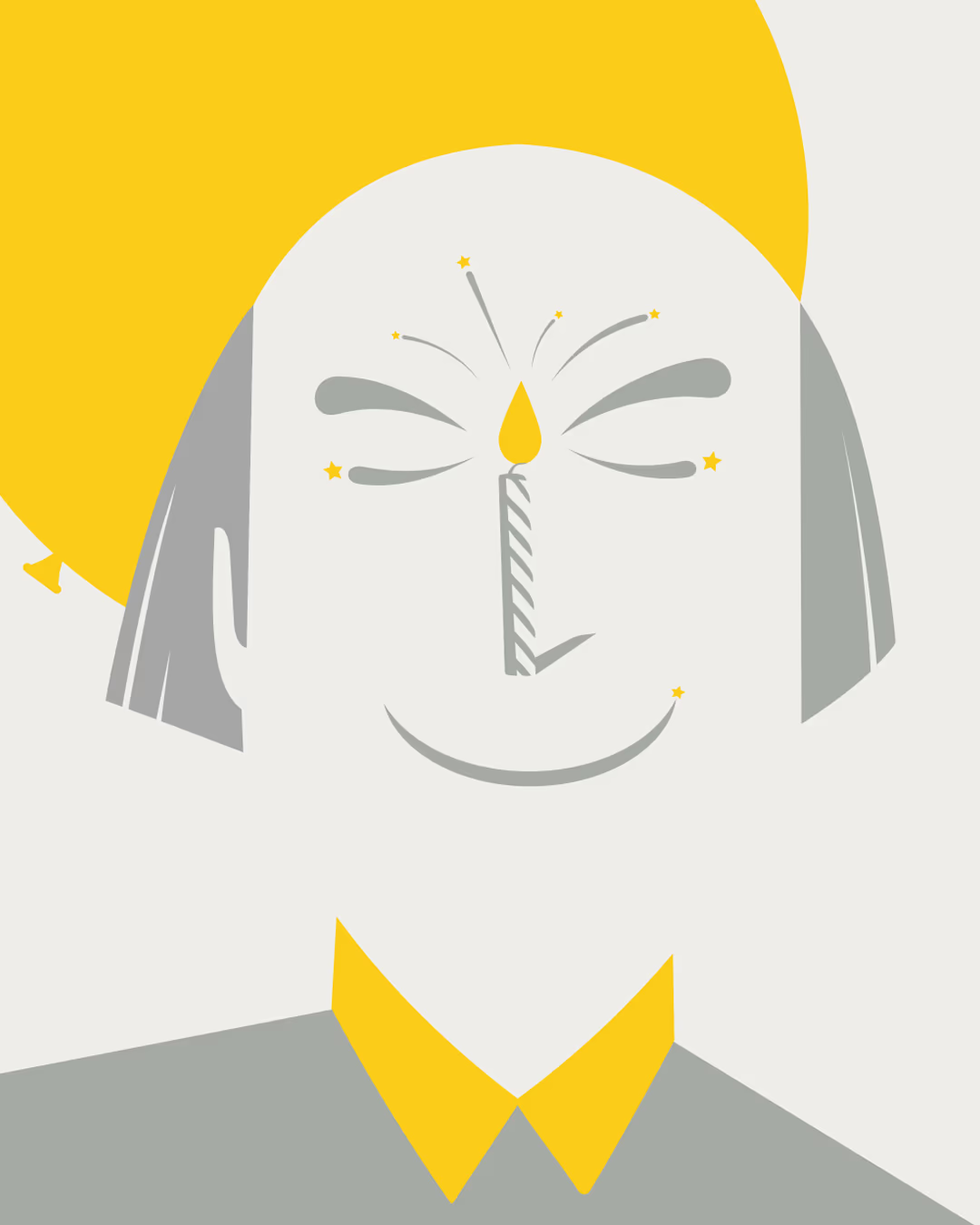
Quentin Blake.
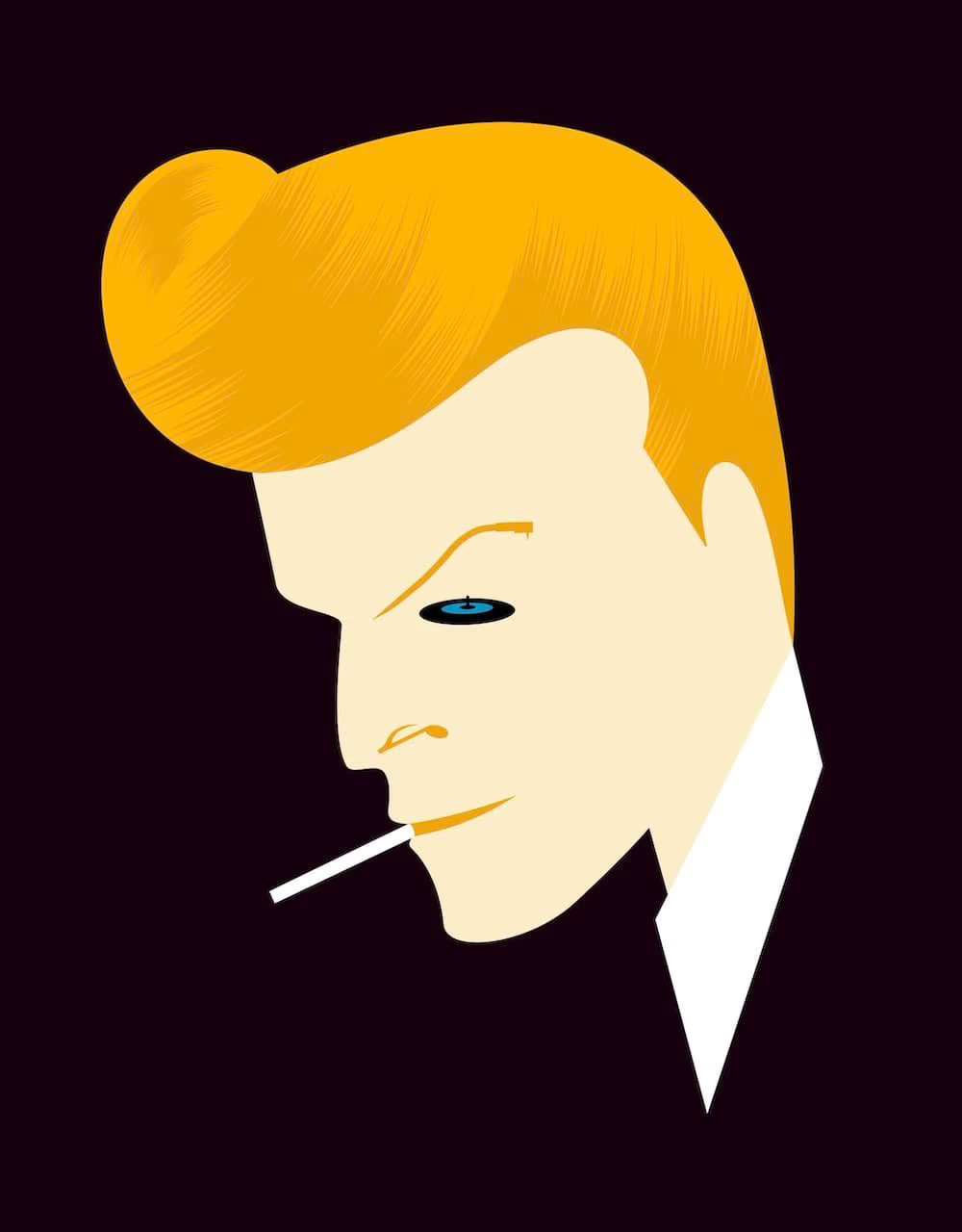
David Bowie.
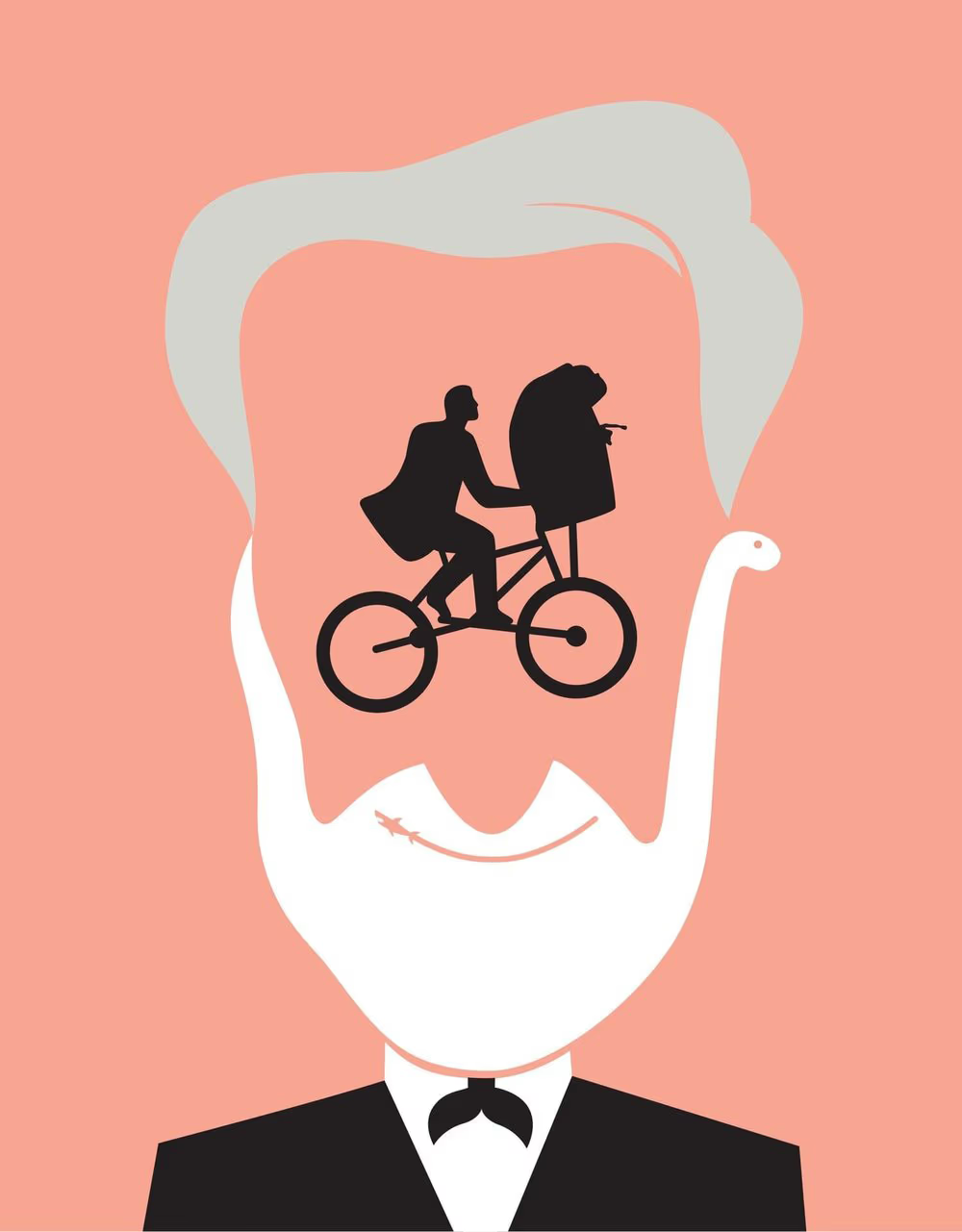
Steven Spielberg.
What project or theme has been the most challenging for you?
Well, I’m known for illustrating complex stories. Therefore, most of my stories are complicated. For example, three illustrations for Presbyterian Revivals in New York. I did them for free, and it was a very challenging story about new cancer treatment methods. At first, it seemed impossible; I told myself, ‘I don’t know where to start…’ because there were many terms and concepts that were difficult to illustrate. But now these works are in the MoMA collection, and I’ve received many awards for them.
Sometimes challenges arise when creating animation. Because it requires a completely different way of thinking during the creation process, with constant, non-static movement of ideas. This, by the way, relates to your previous question. The difficulty is that if a client wants to change something, it can disrupt your entire concept, which consists of a whole chain of images.
Portraits can be challenging. I dedicate a lot of time to them. Even though they look very simple, there’s a lot of thought and time behind them. For example, if you depict Putin, who wants war, how do you show him? I envision planes, bombs, and dying people—that is Putin today.
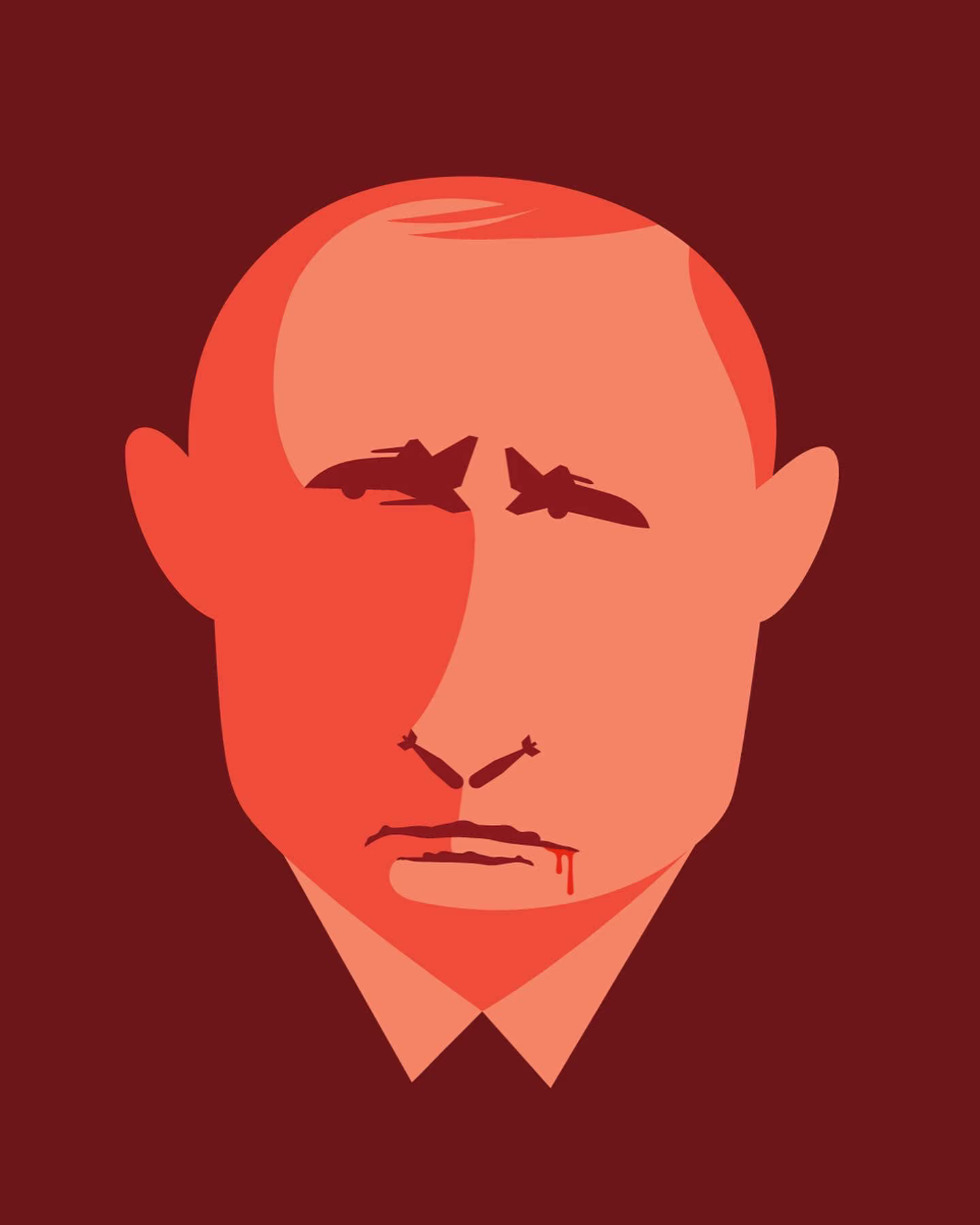
Vladimir Putin.
You’ve created several illustrations about the war between Russia and Ukraine. They were for various media and reflected the content of the articles. What might an illustration about the war look like that reflects your personal perspective?
I need to think about it. I can show a few sketches in about 20 hours. It will definitely be something anti-war, but I can’t give an answer right now. I believe that almost all illustrations, to a greater or lesser extent, always reflect my attitude toward the topic. Perhaps it will be something like David and Goliath—someone who seems strong and big attacking the weak and small, but the outcome is unpredictable. And it’s not the one everyone bets on who wins. This is already the beginning of brainstorming! But I need a bit more time to contrast and show the extremes and injustices.

Cover of The Economist.
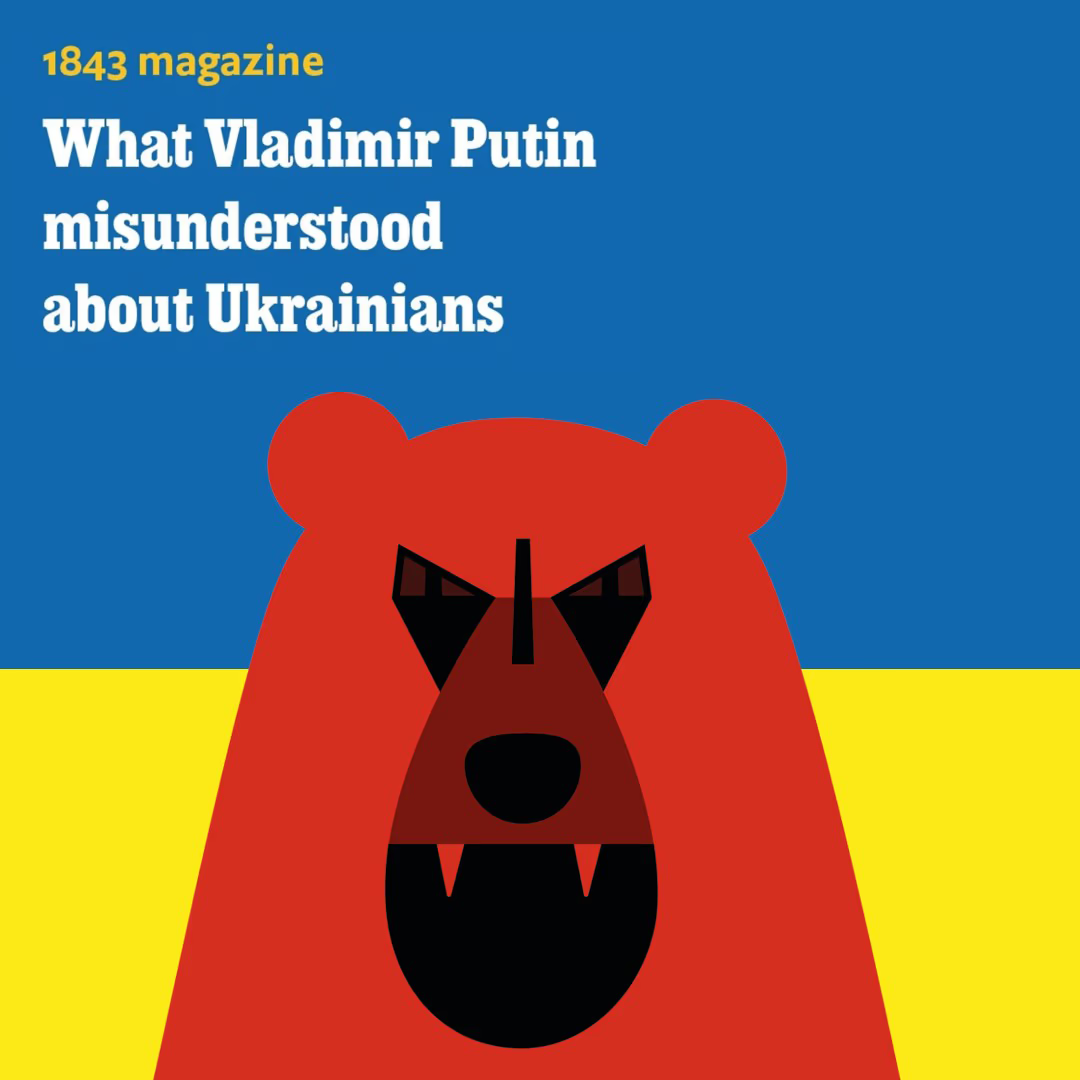
Illustration for 1843 Magazine.
What enables you to create new projects and keep moving forward? How do you avoid getting tired of the work you’ve been doing for many years?
Everything I do is, in one way or another, related to the world of art. Whether it’s my main work or a project with my daughter’s dolls. I try not to miss any exhibitions that open in London and constantly make sketches. My life, work, and hobbies are closely intertwined, and I don’t try to escape from them.
I’m inspired by everything! For example, the lamp behind you. I stare at it for a long time and see a face with a mustache or a lion in a ring. Almost every time I look at something, something similar happens. Here’s my first MacBook. When it broke, I illustrated my disappointment on it because I had my presentation for The Guardian there. Later, that image transformed into a face of Steve Jobs.
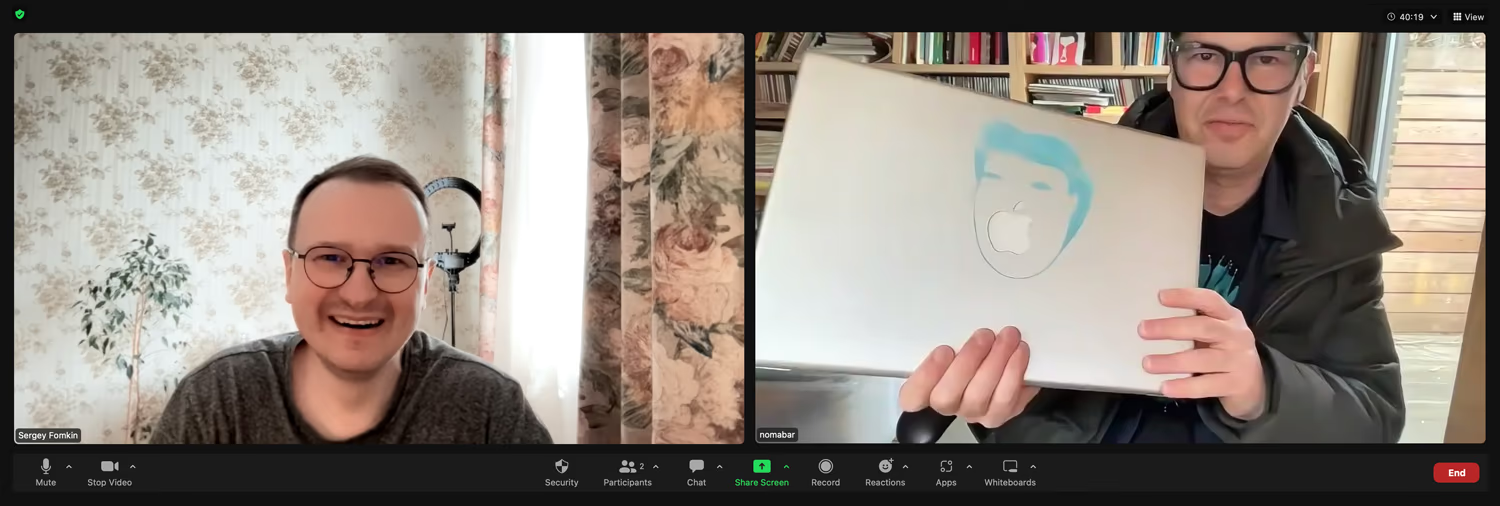
Screenshot during the interview.
One time, I saw a dog sniffing another dog, and I instantly made a sketch. Later, it transformed into a digital drawing and even into a real three-dimensional object. So, everything around me inspires me—small details that we see every day or ordinary things.
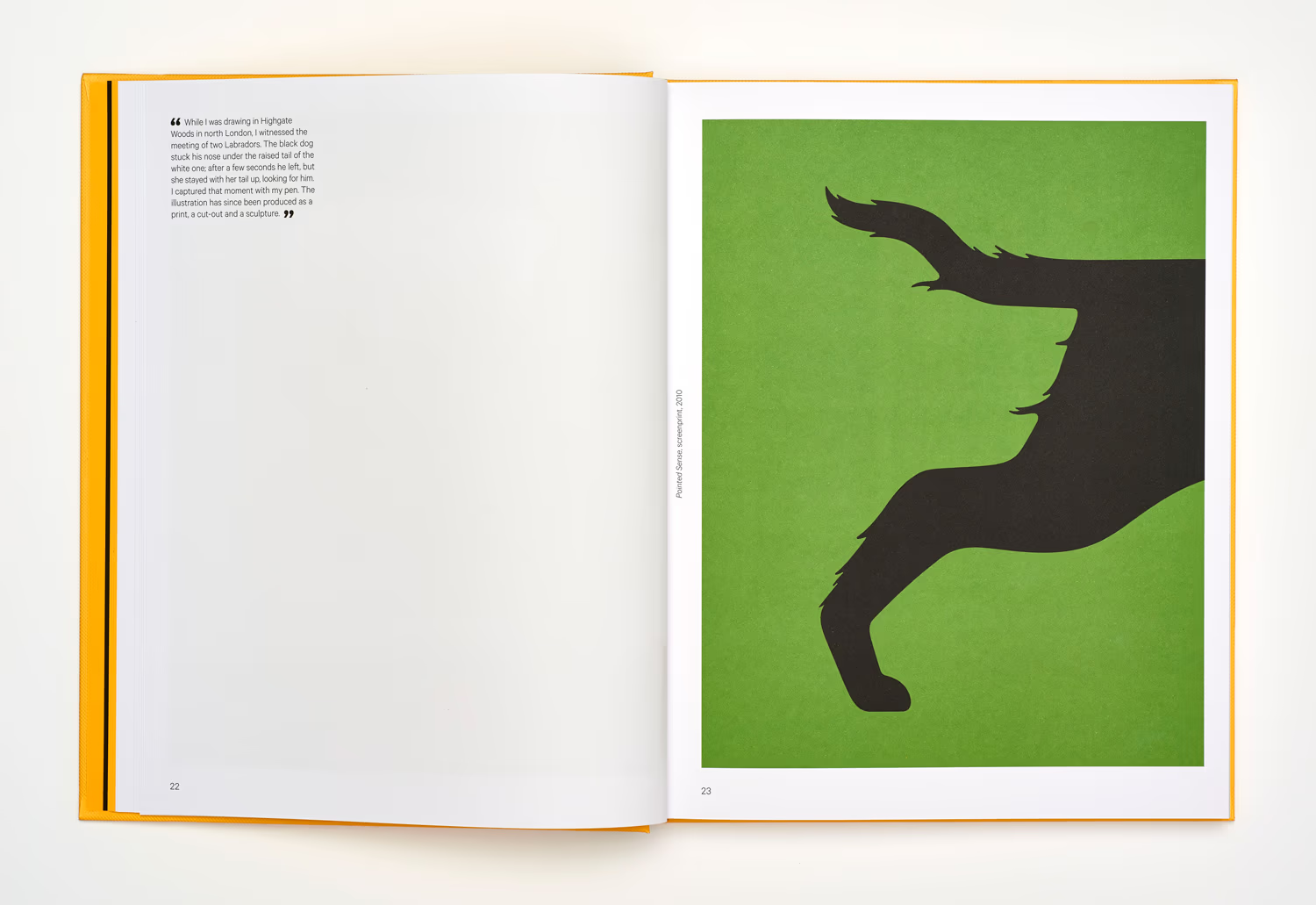
Book spread Less more.
